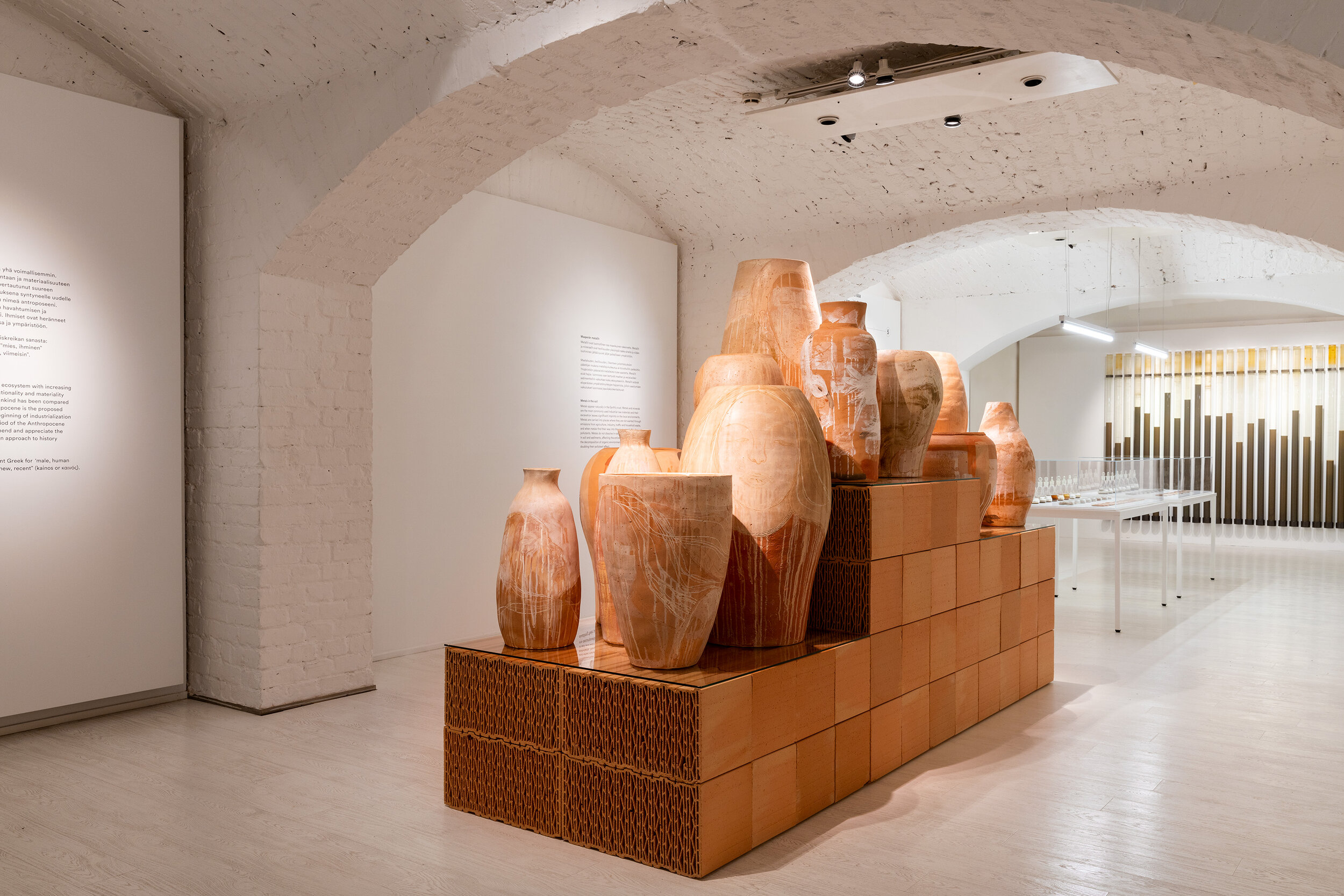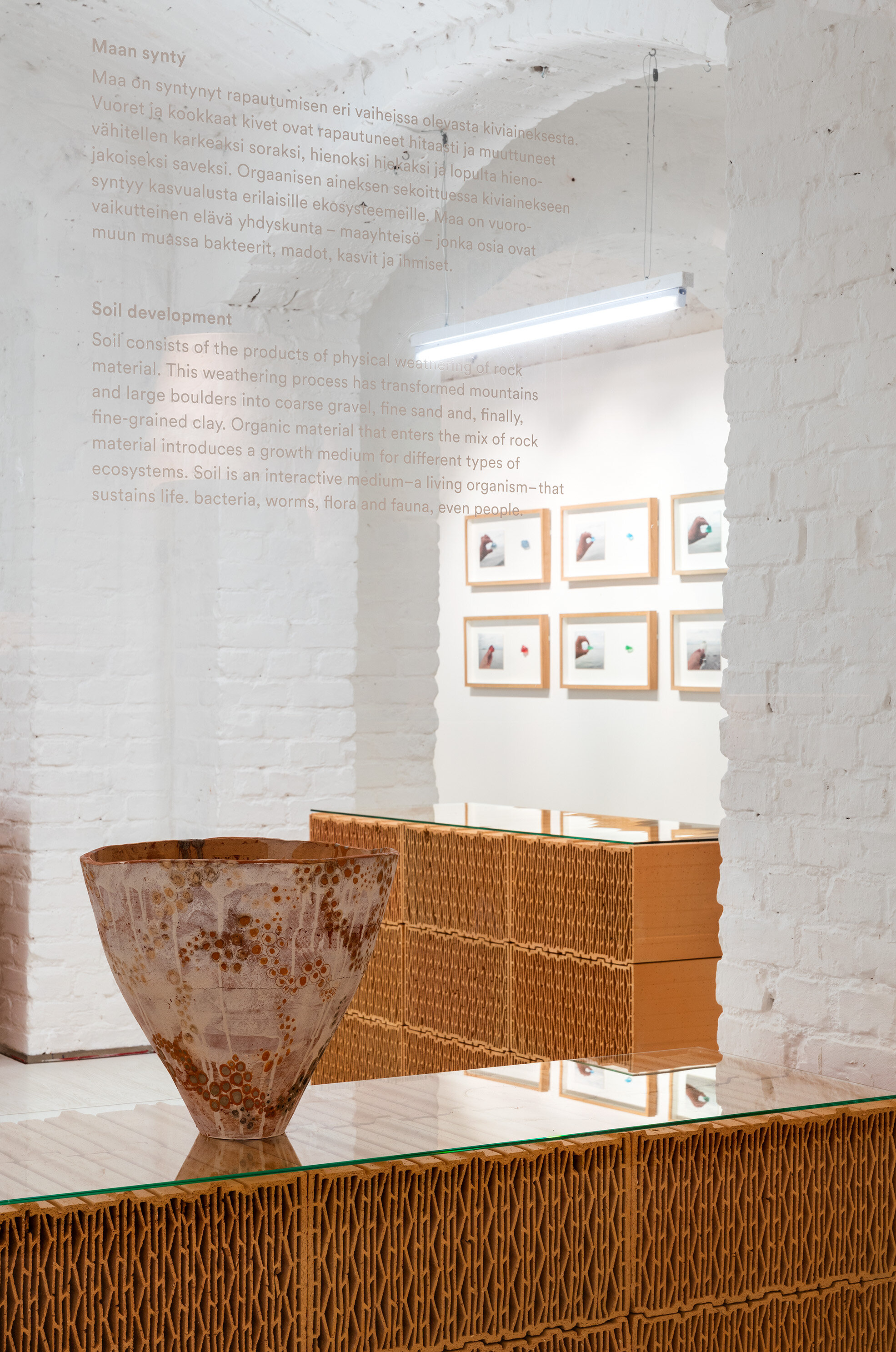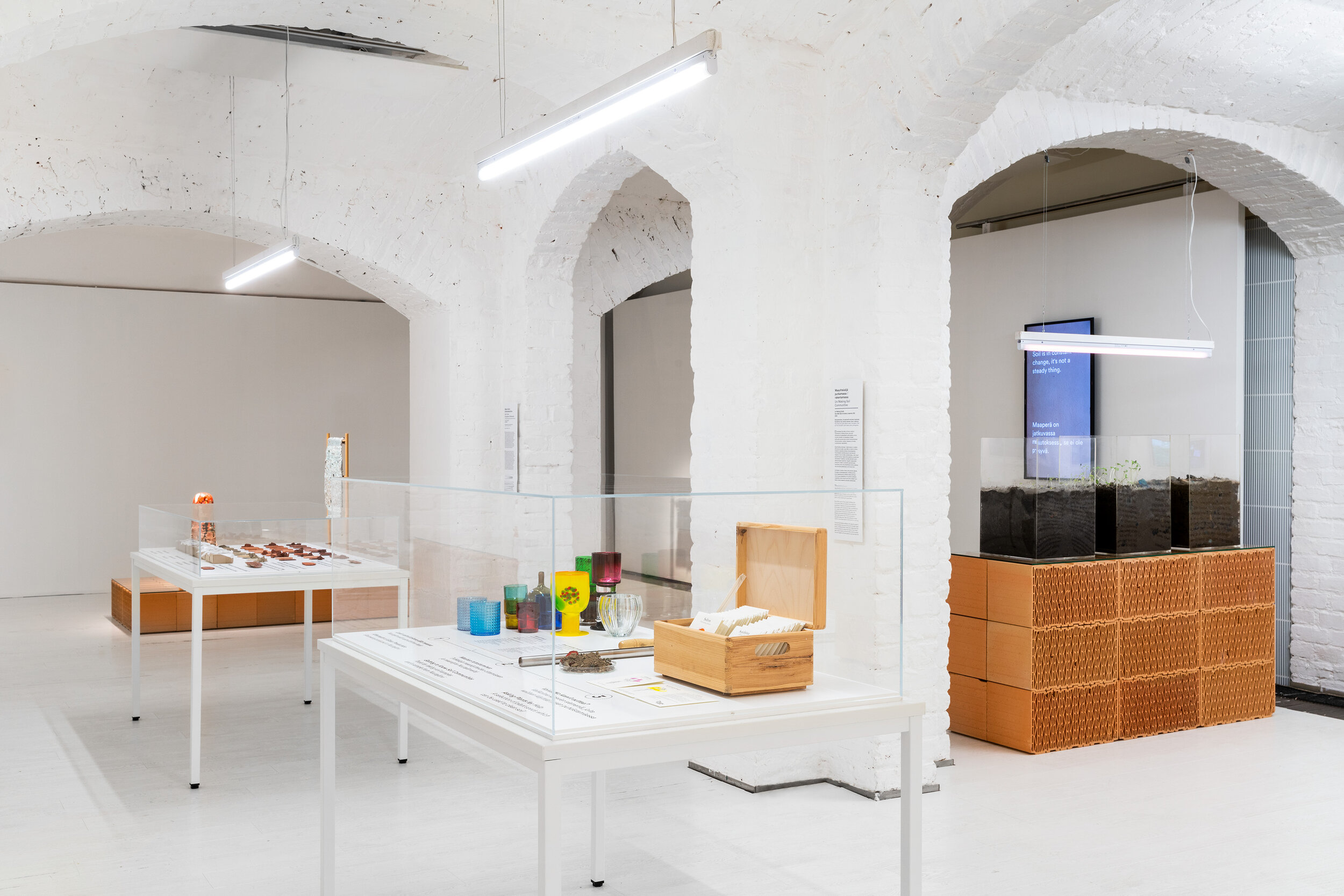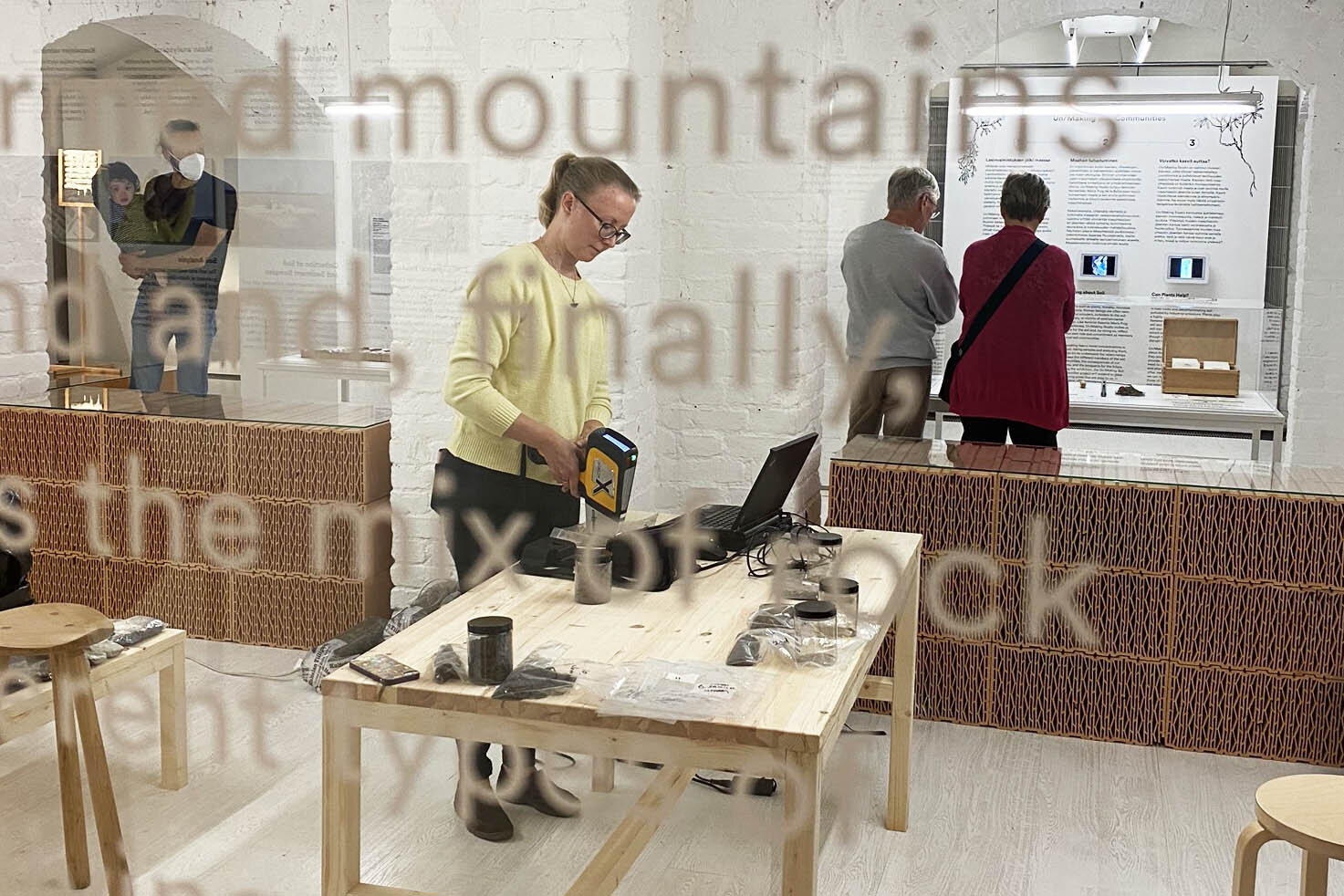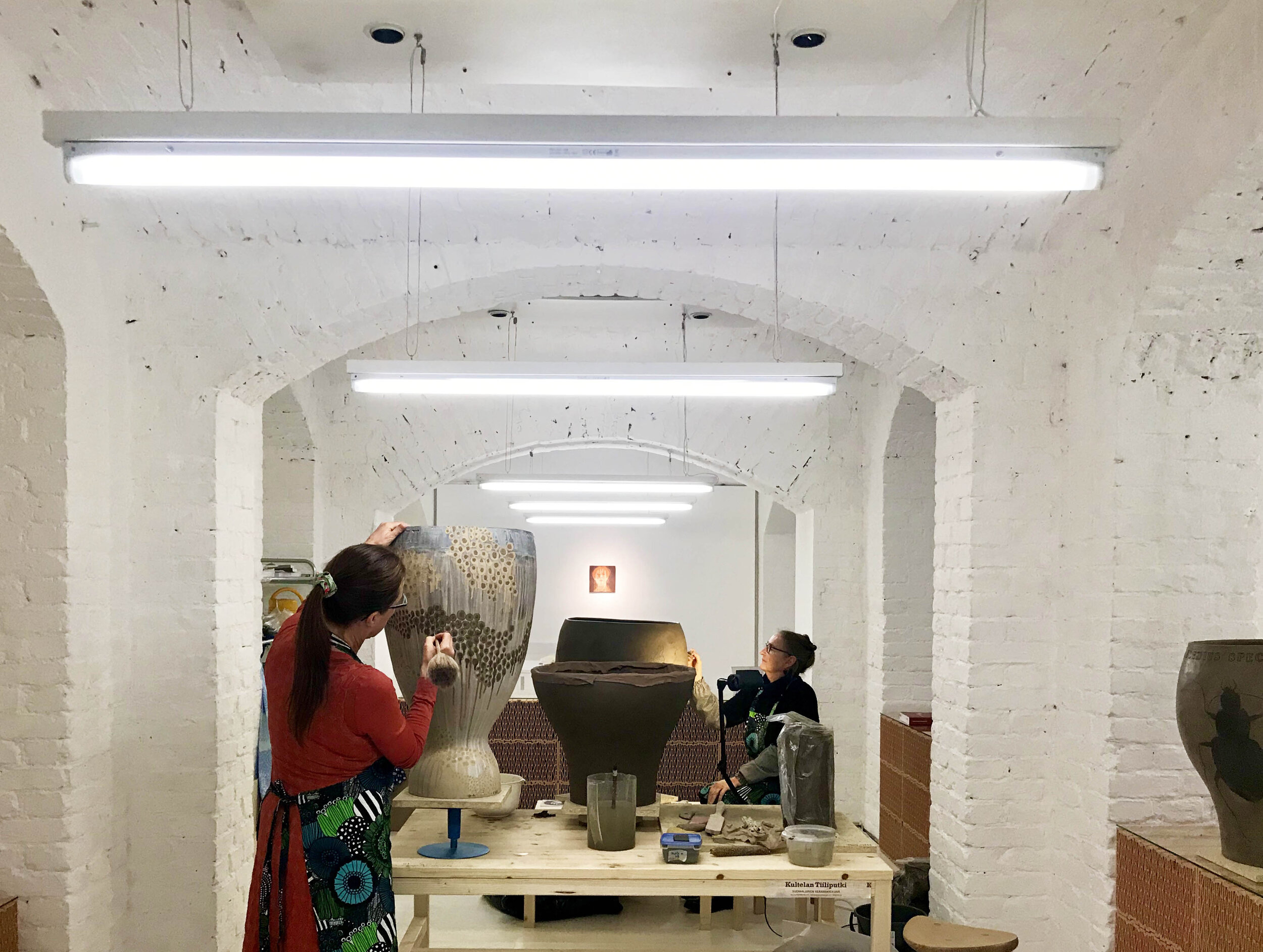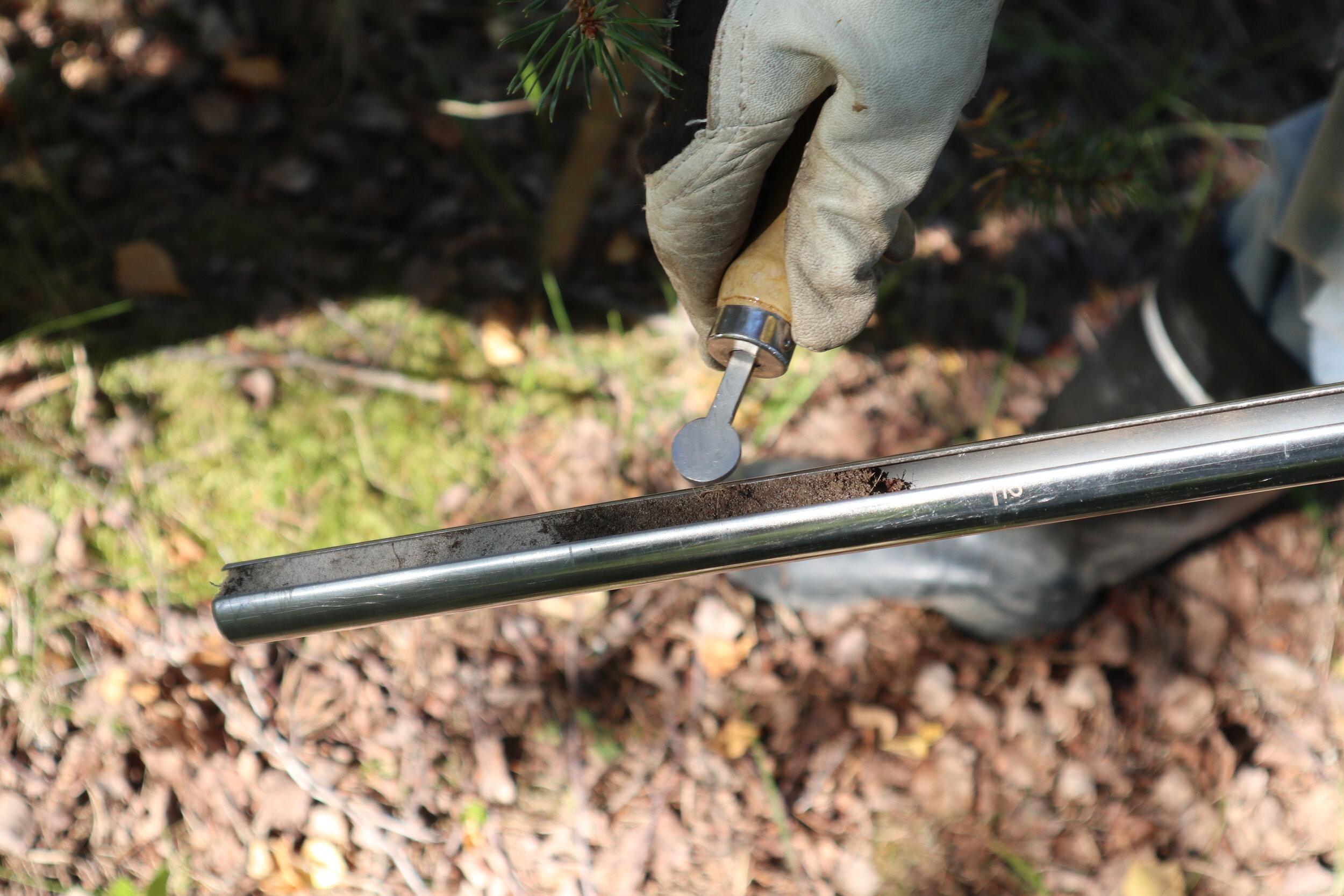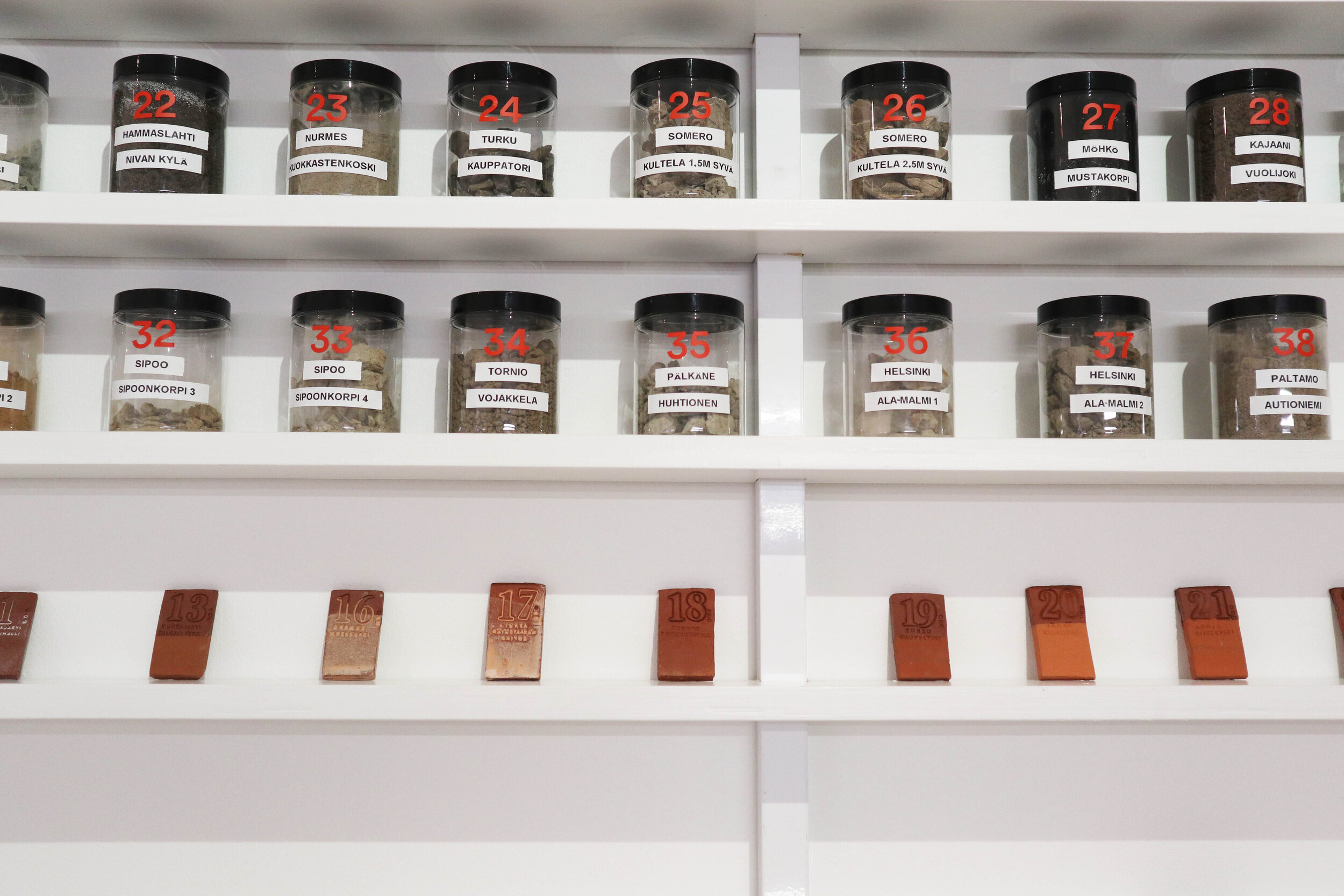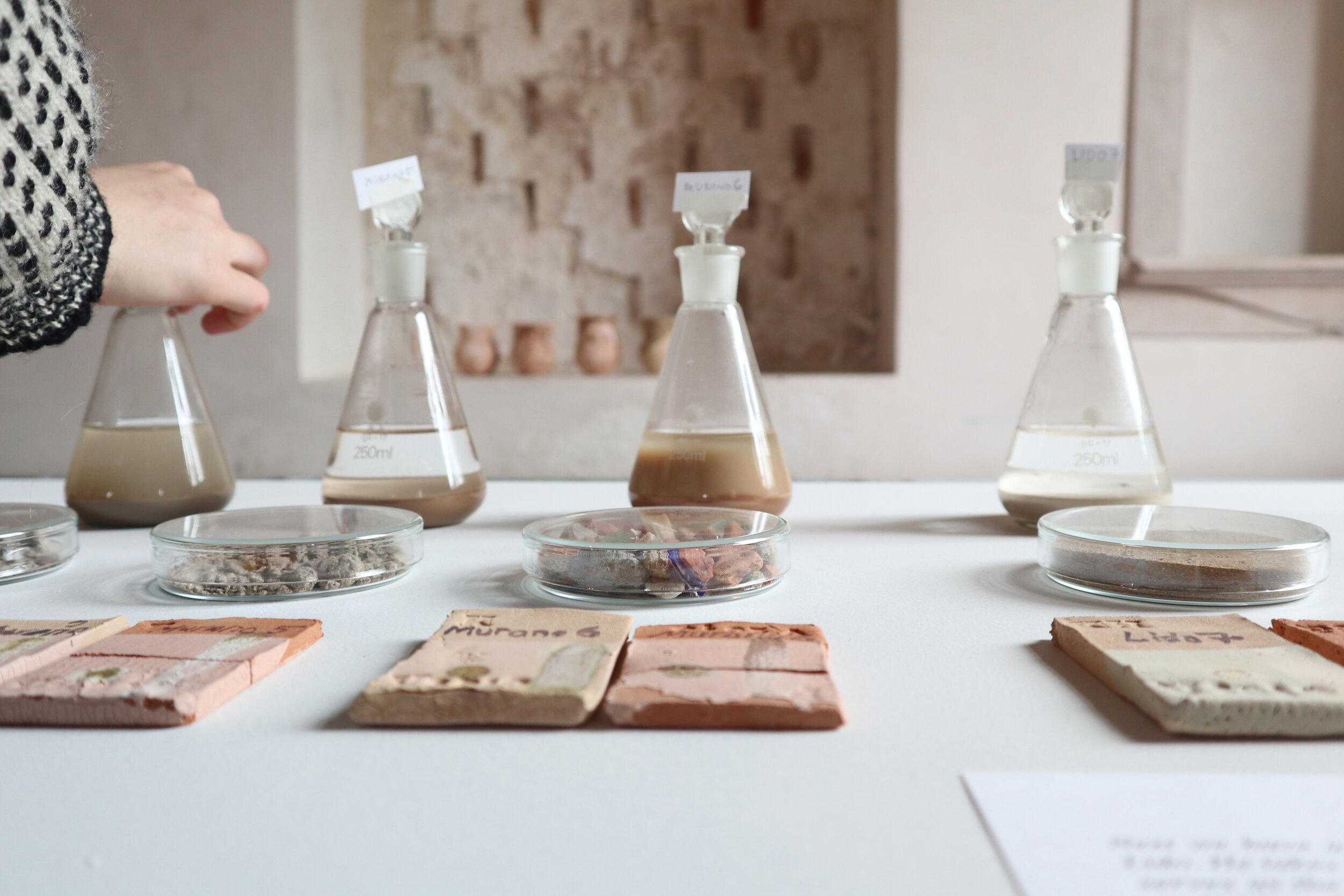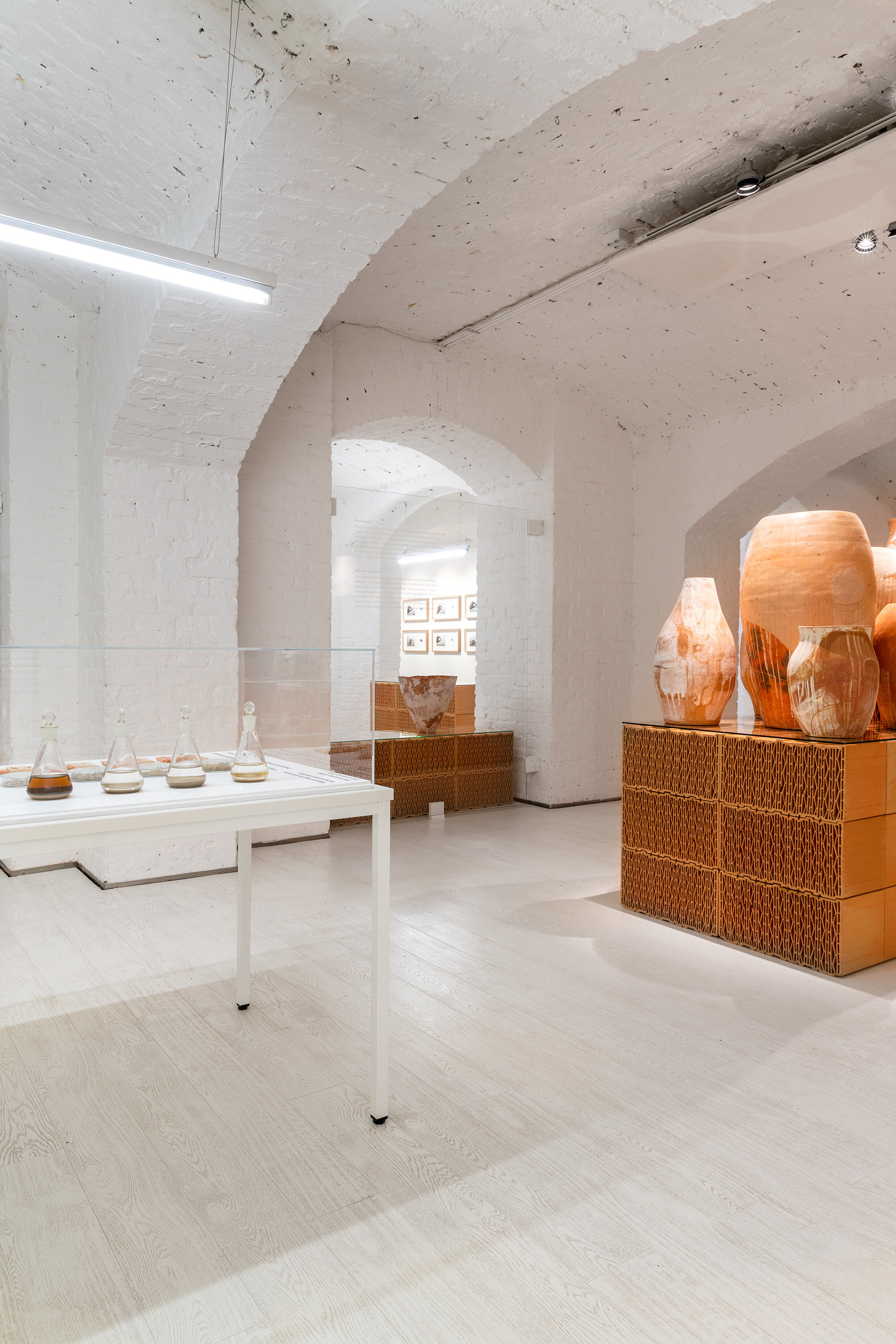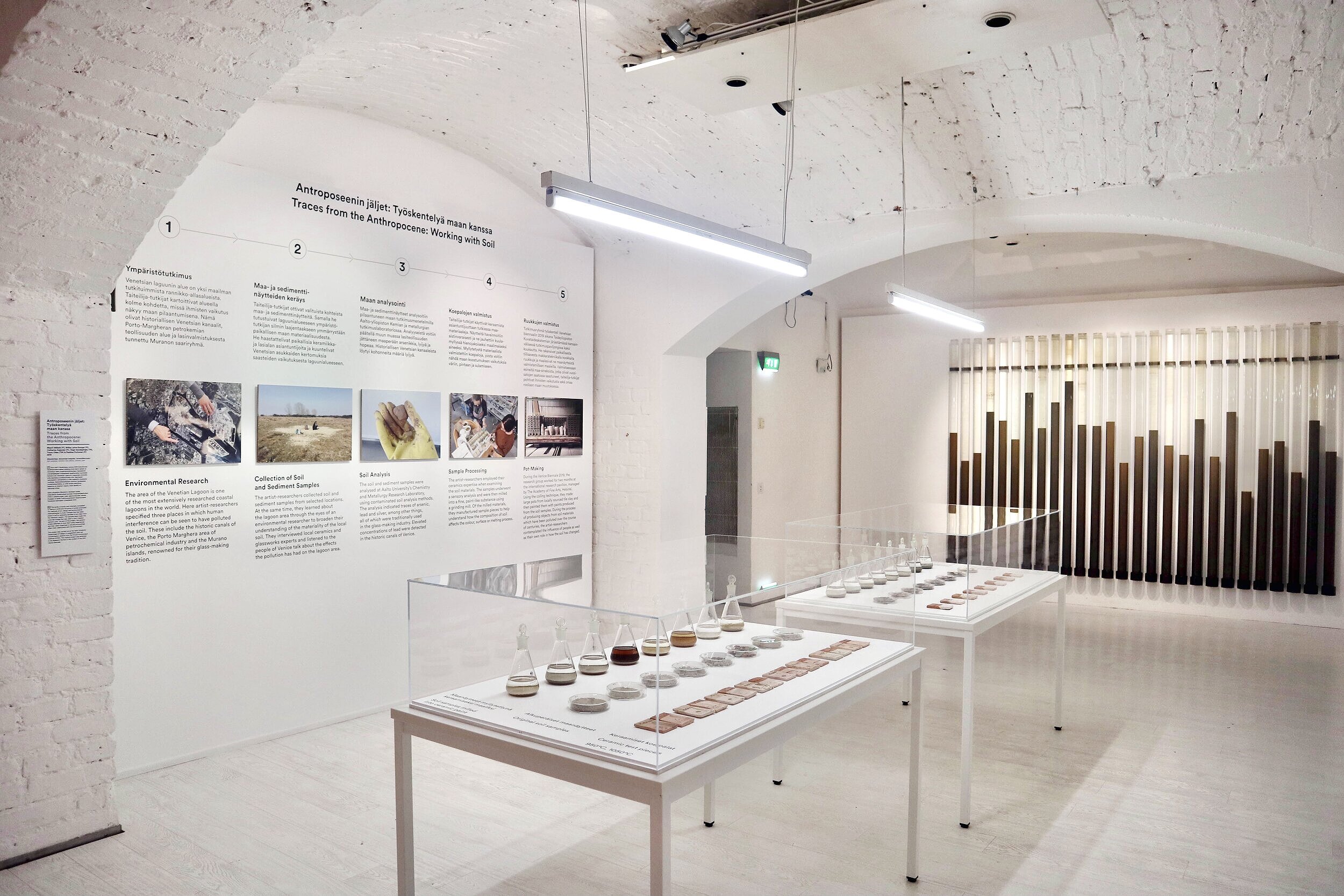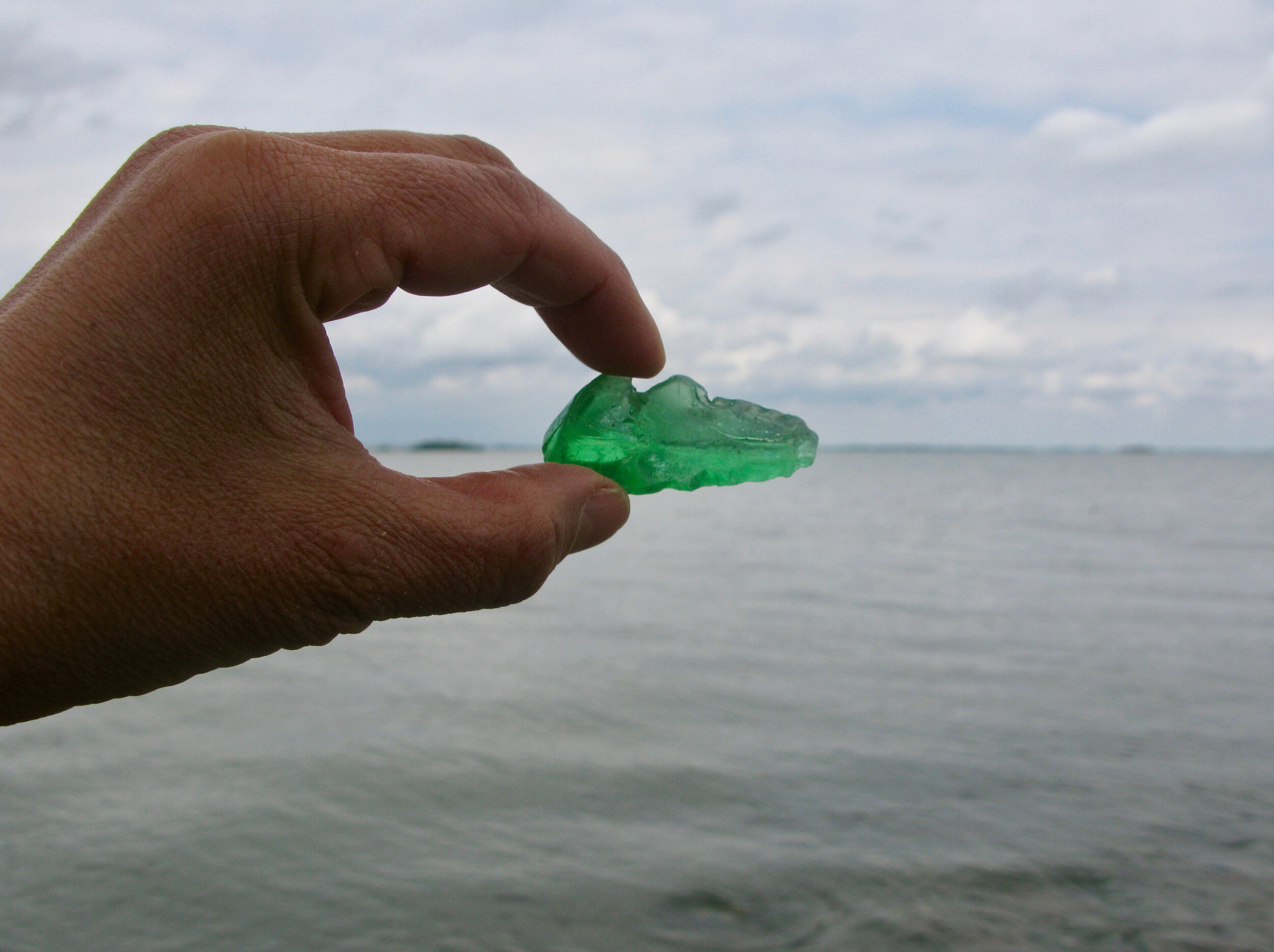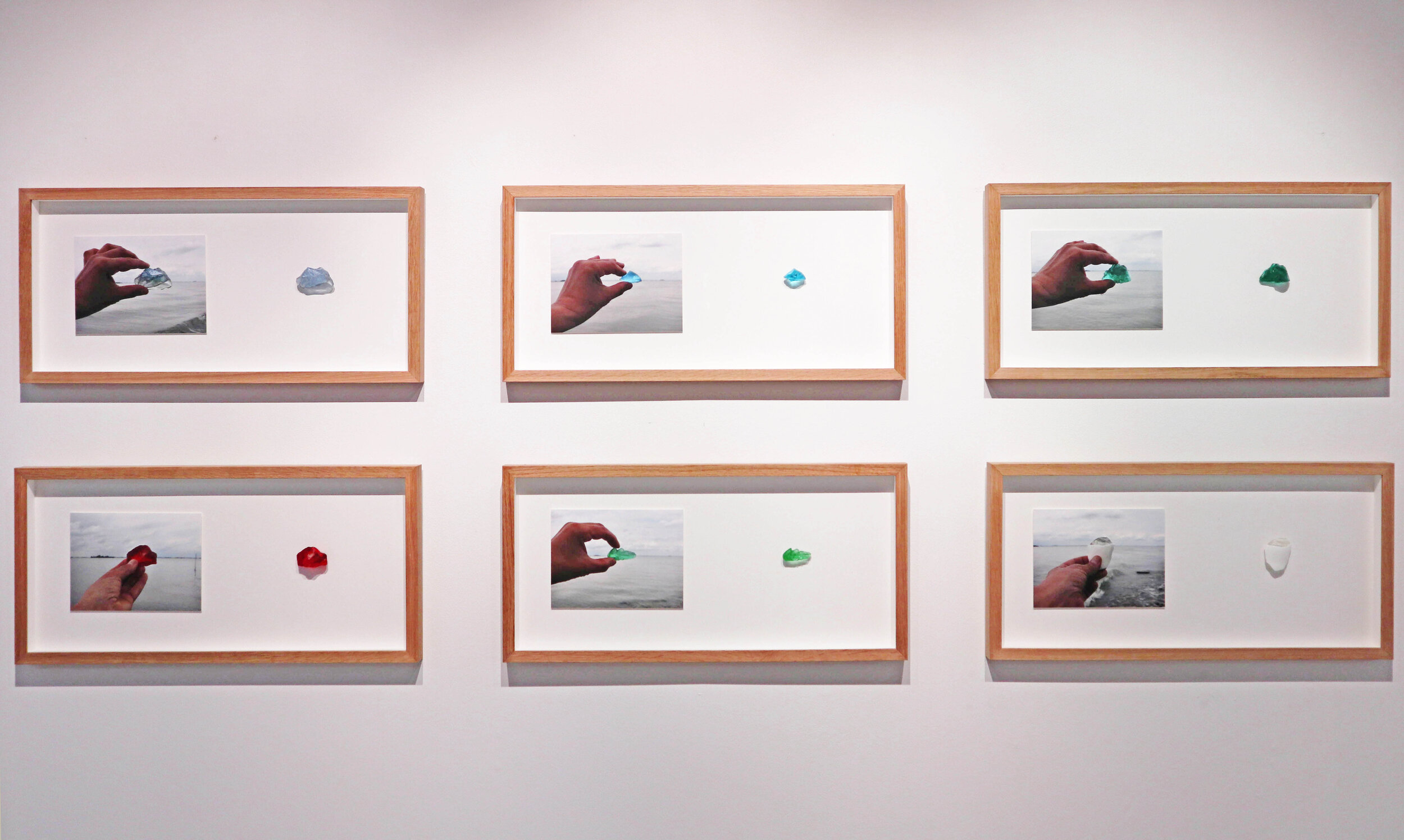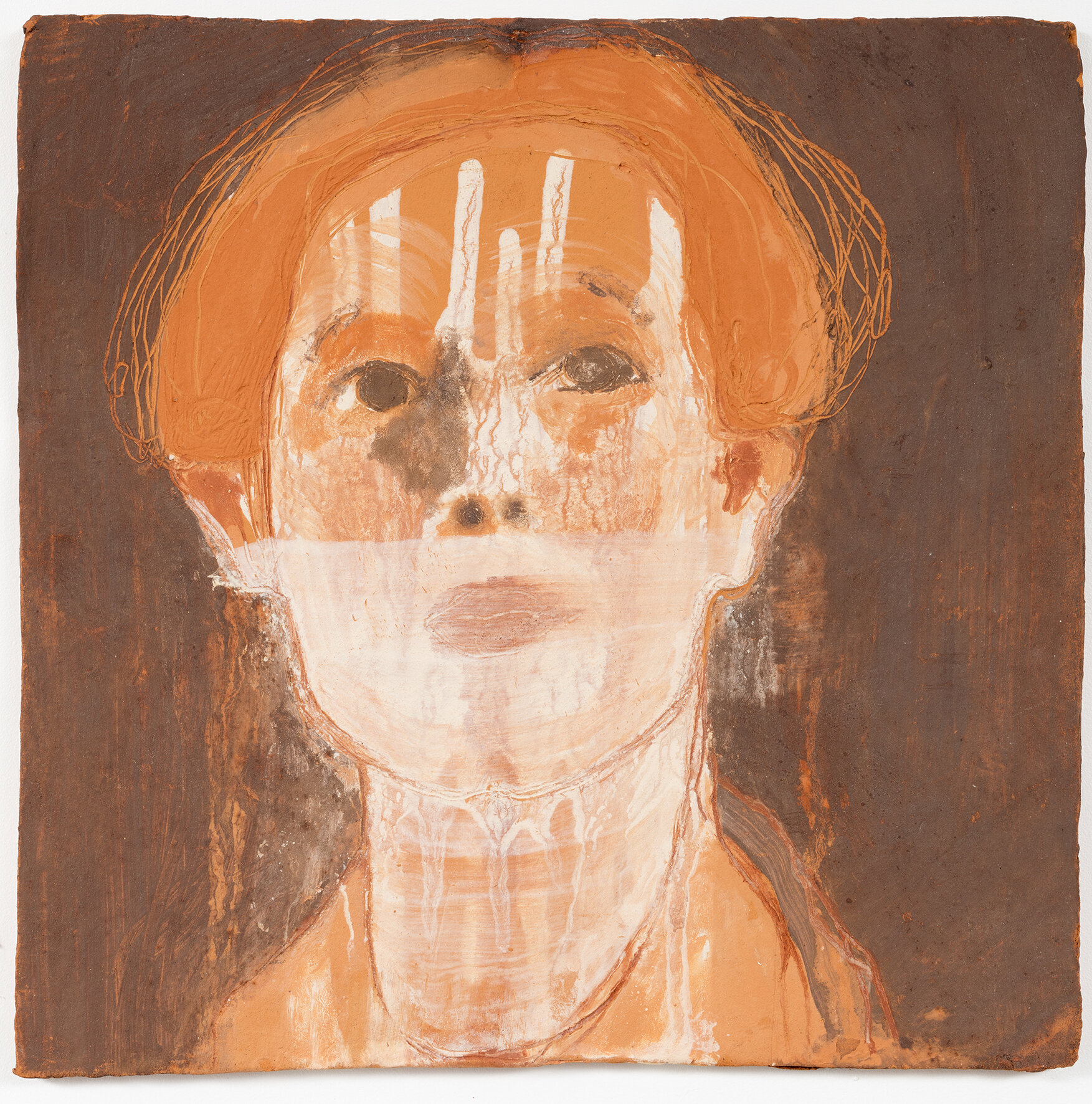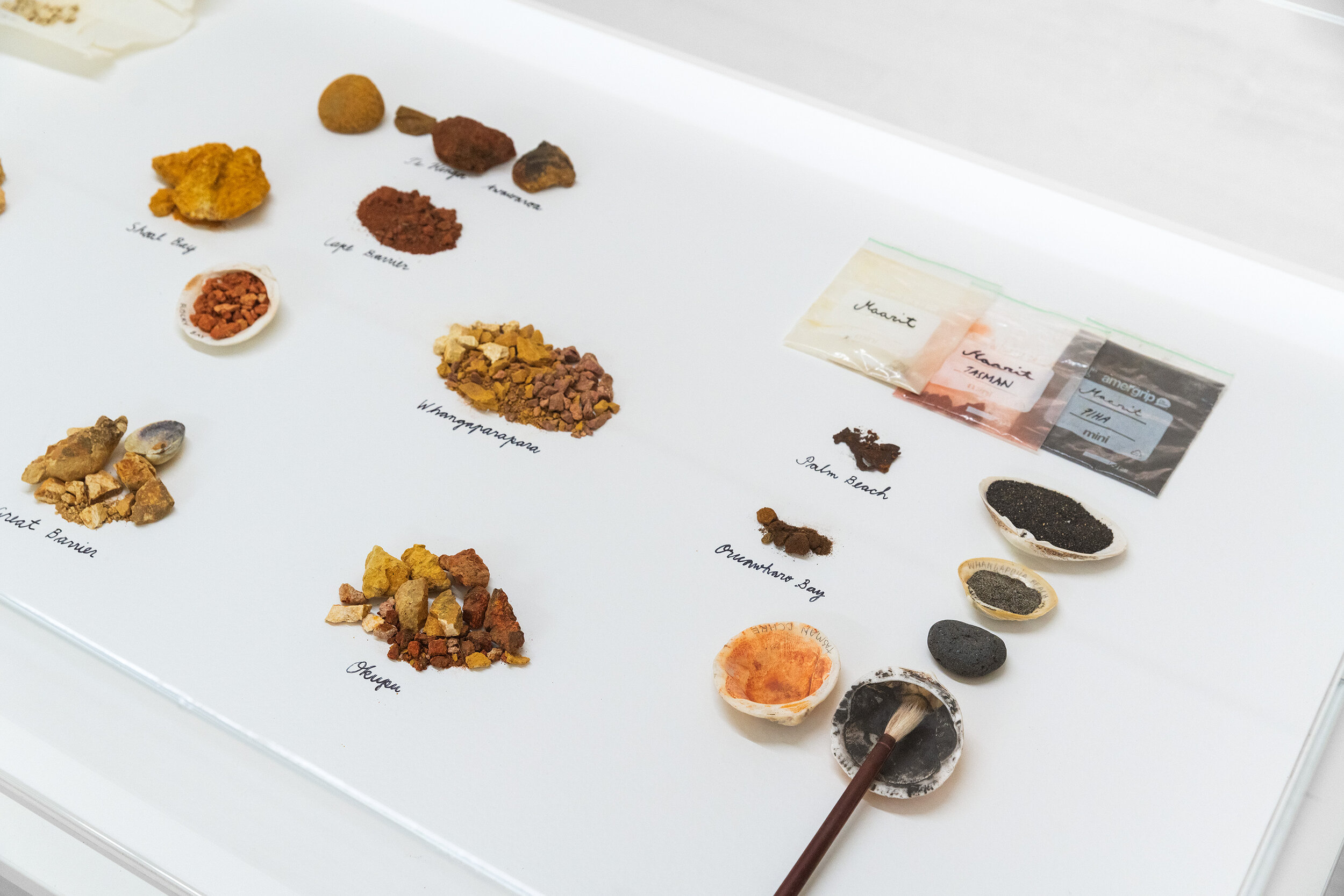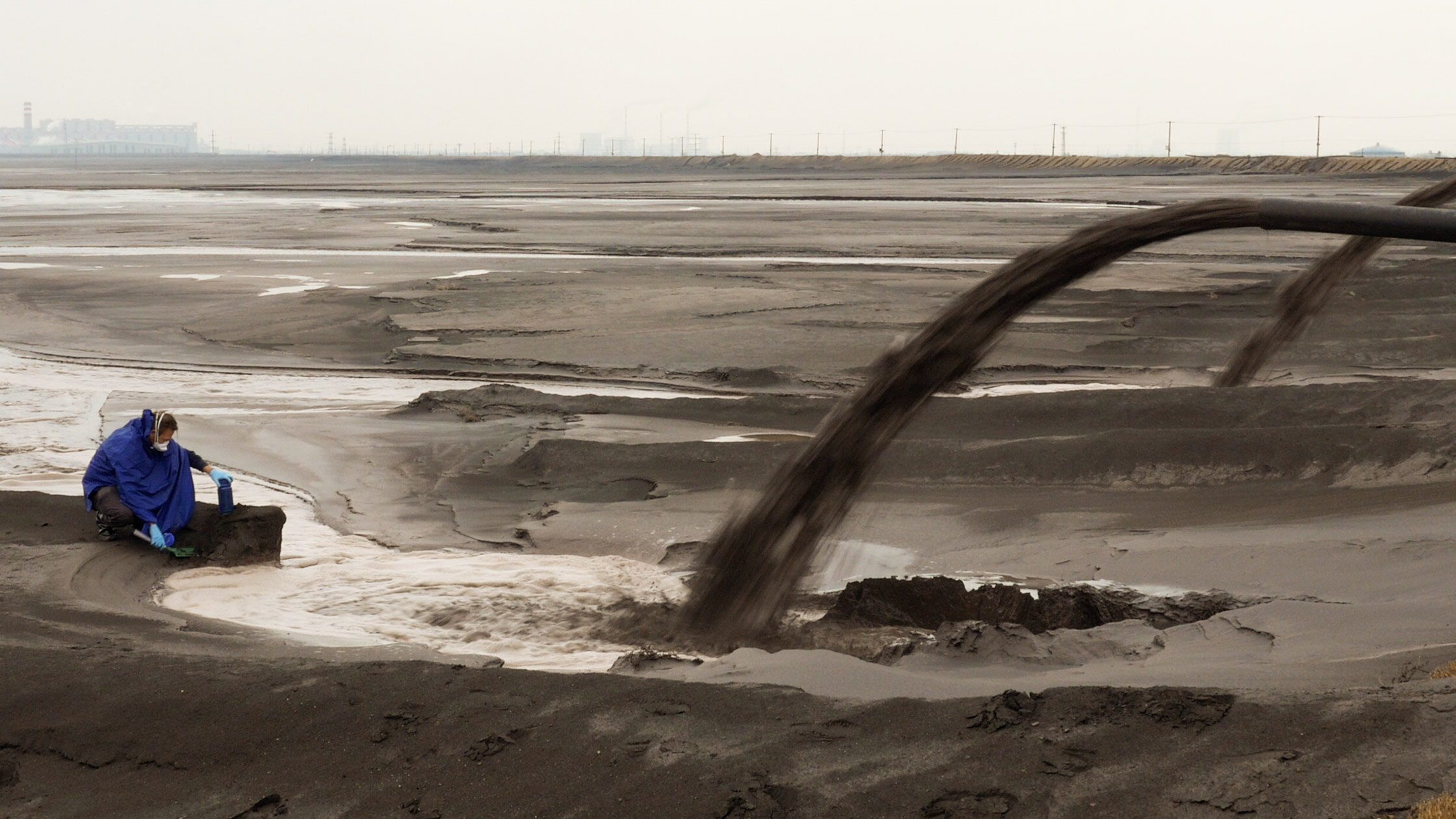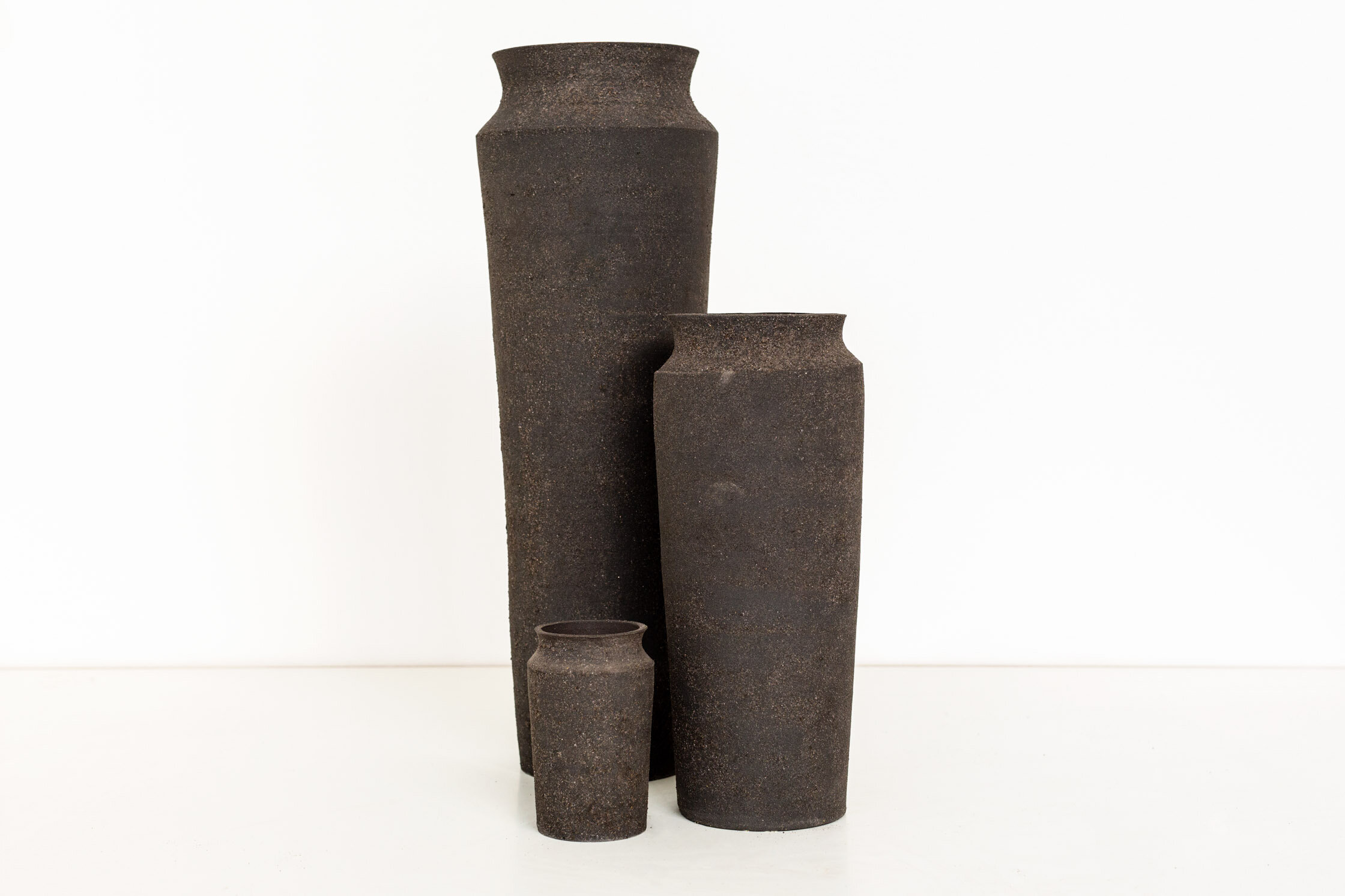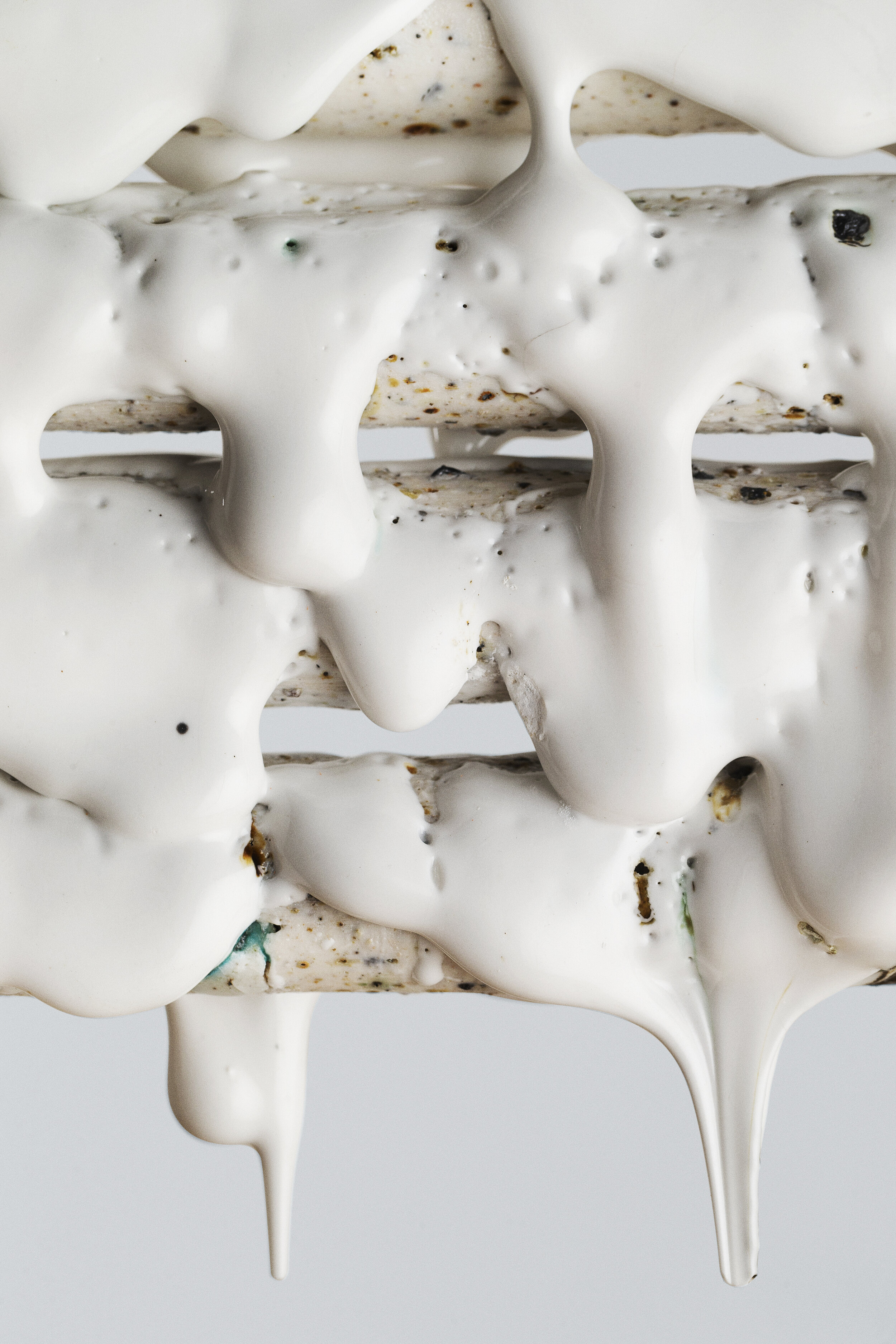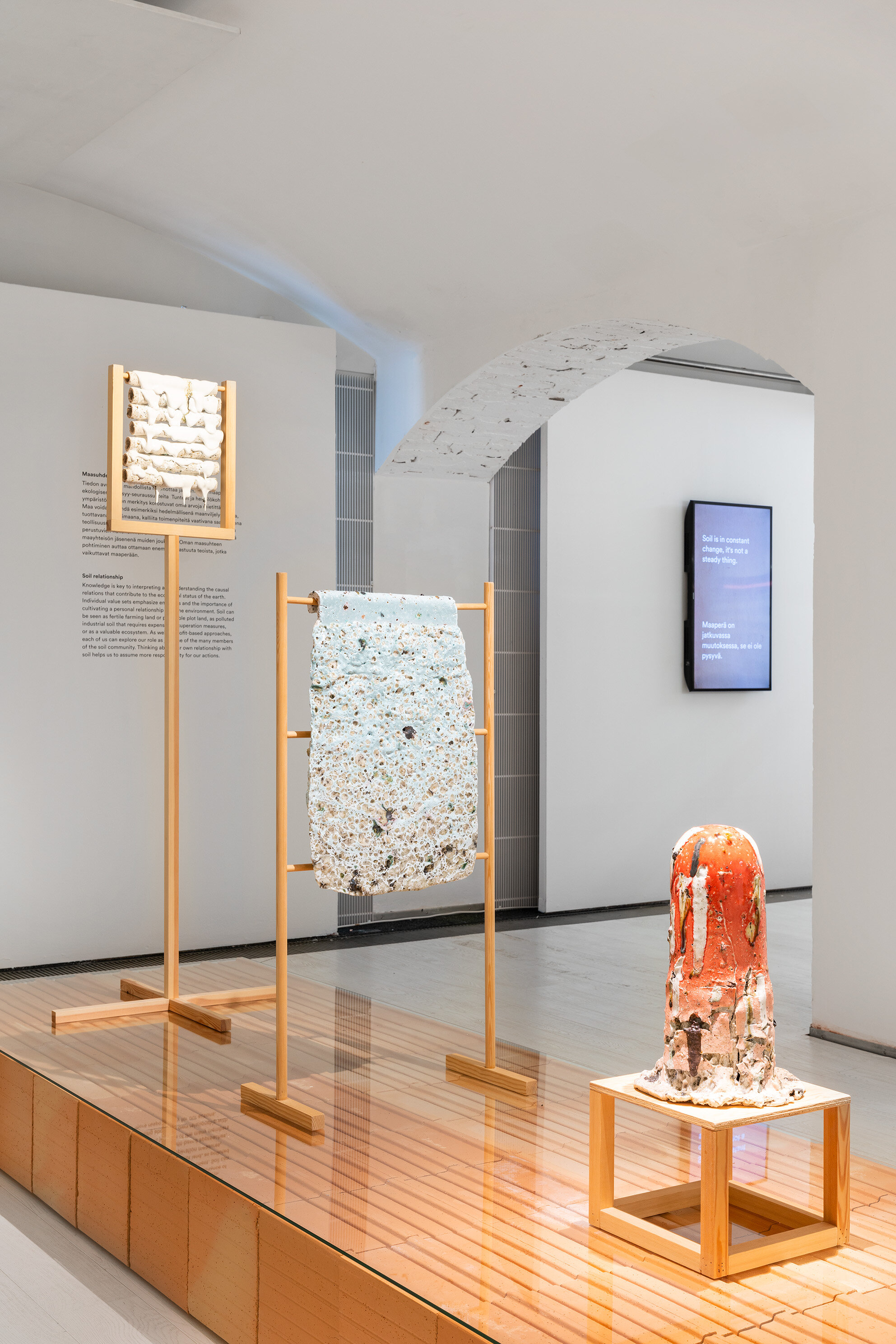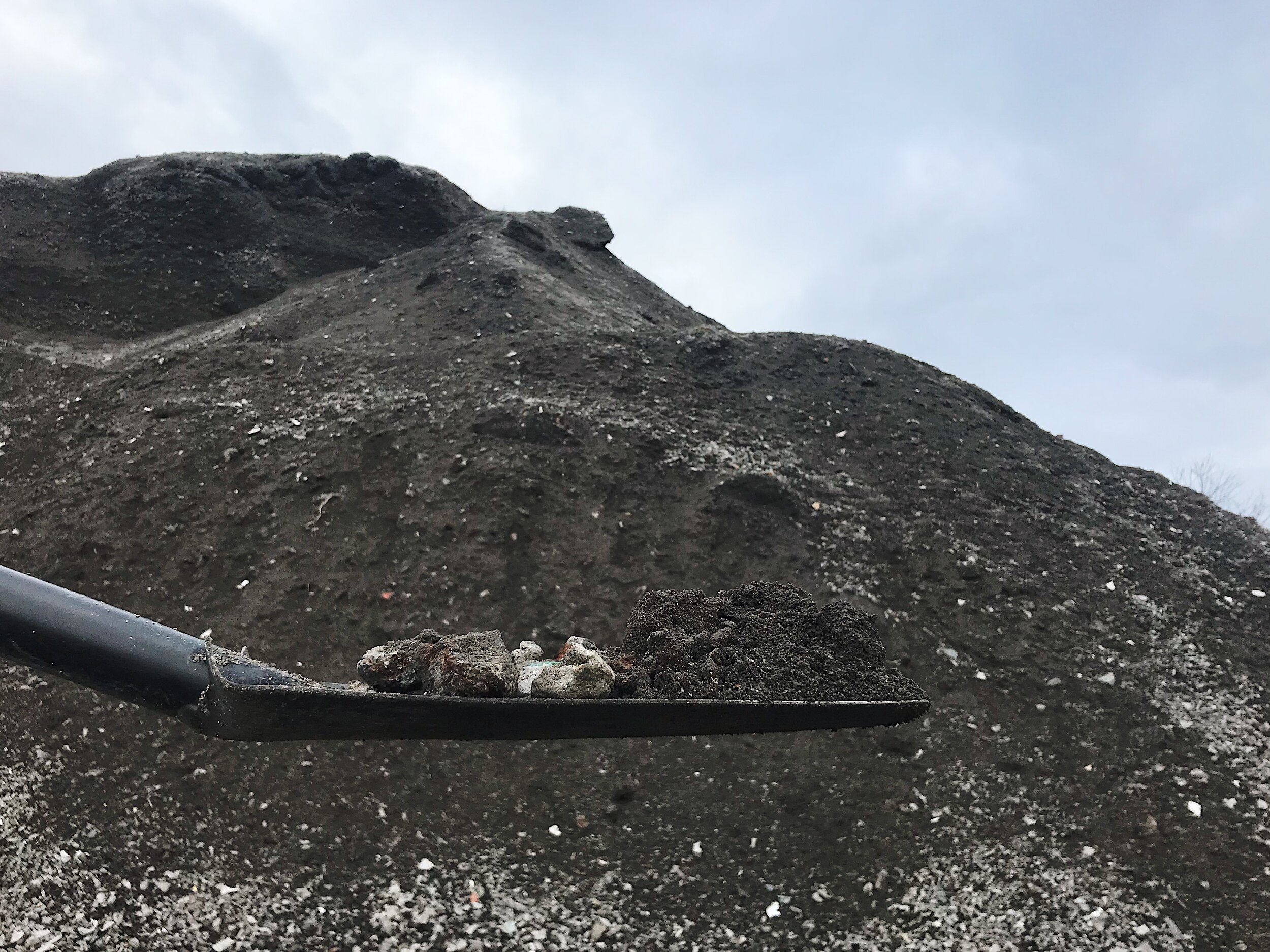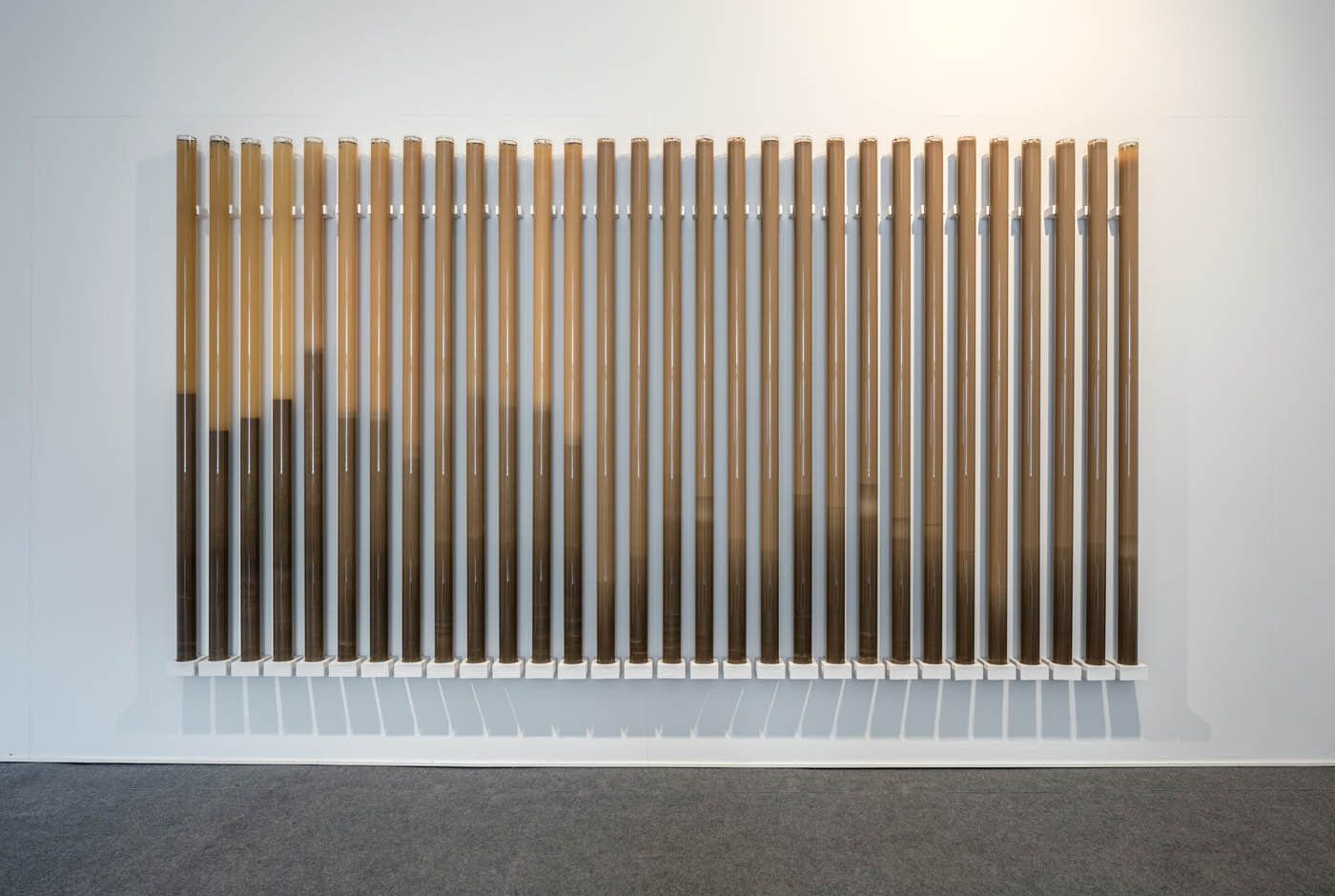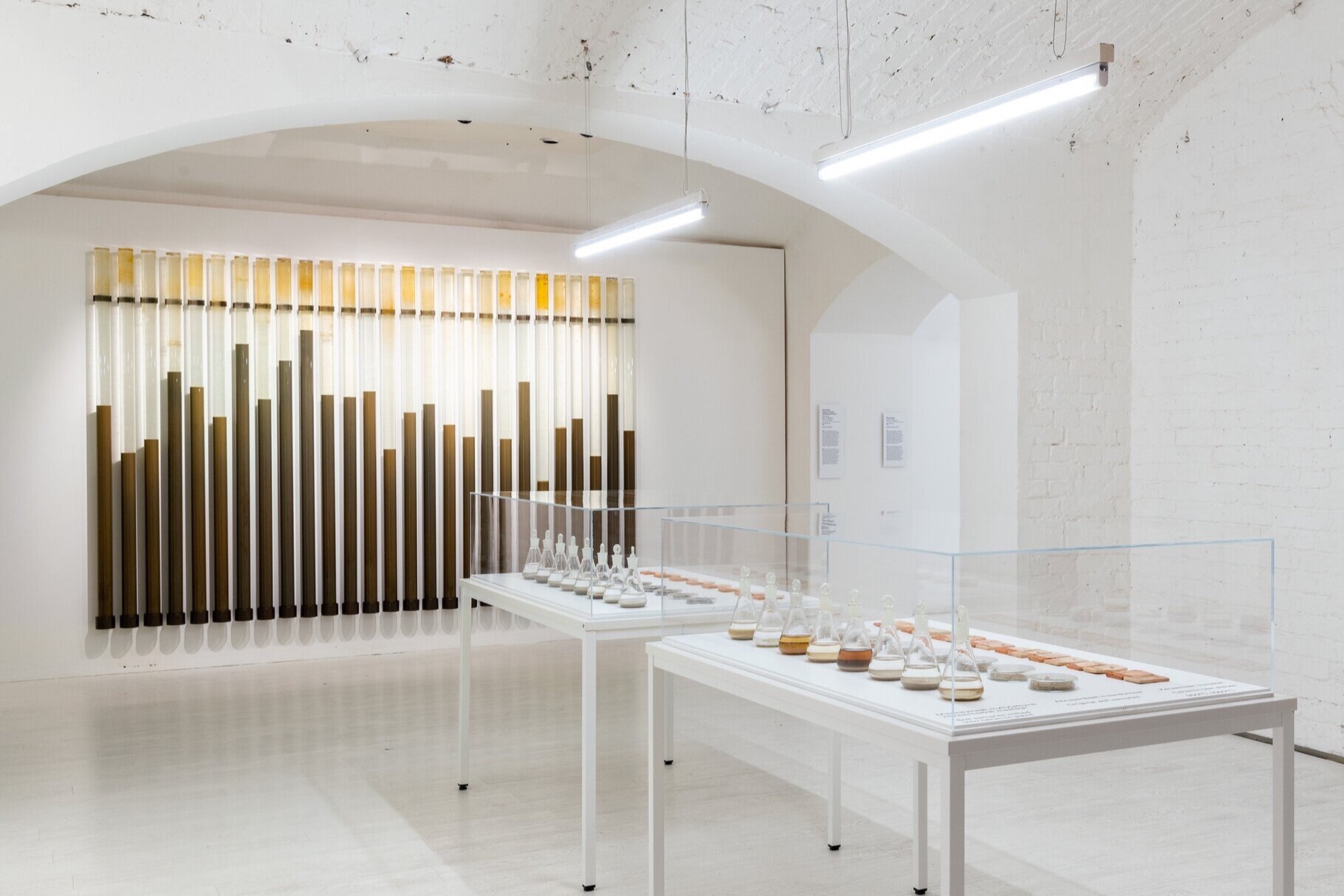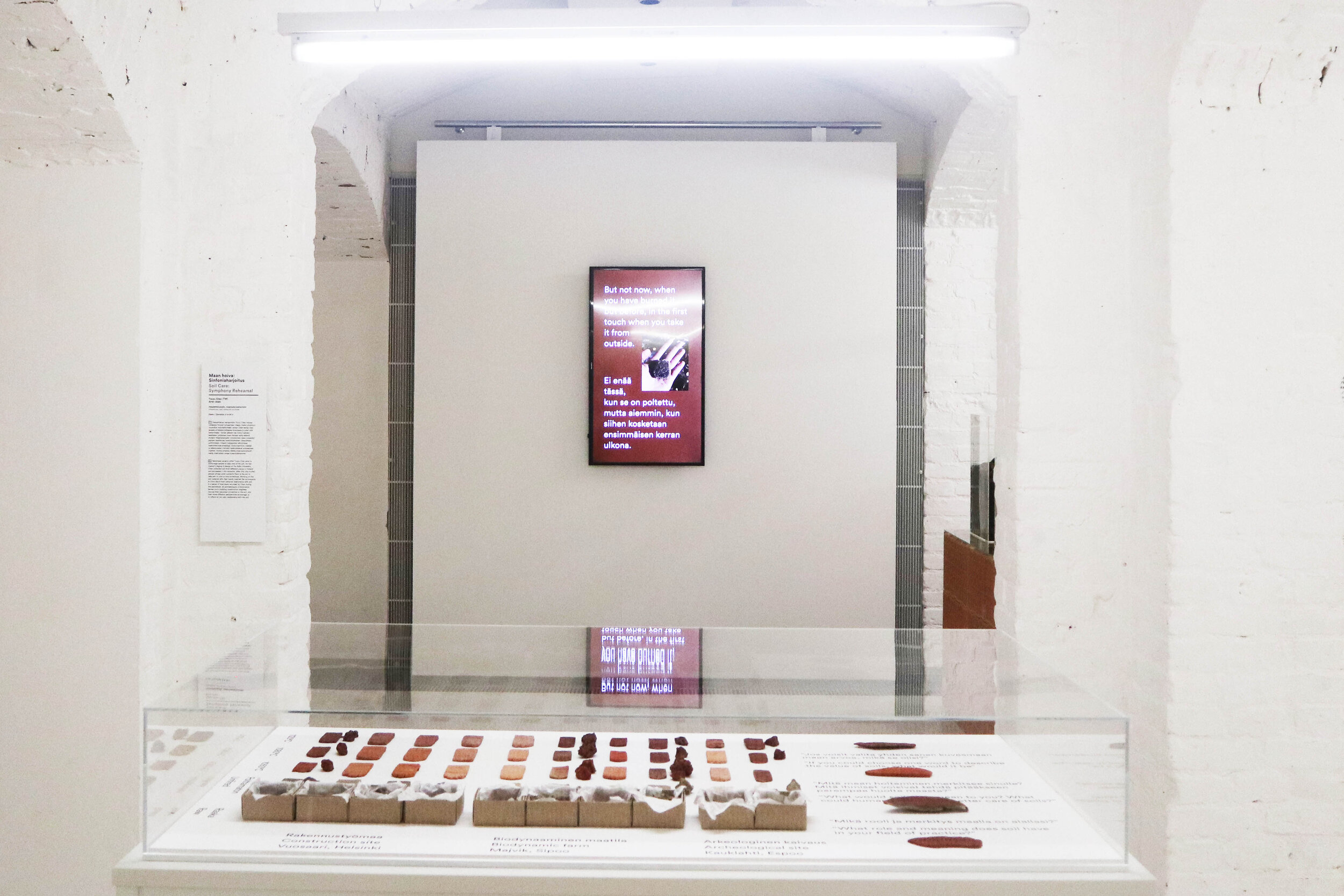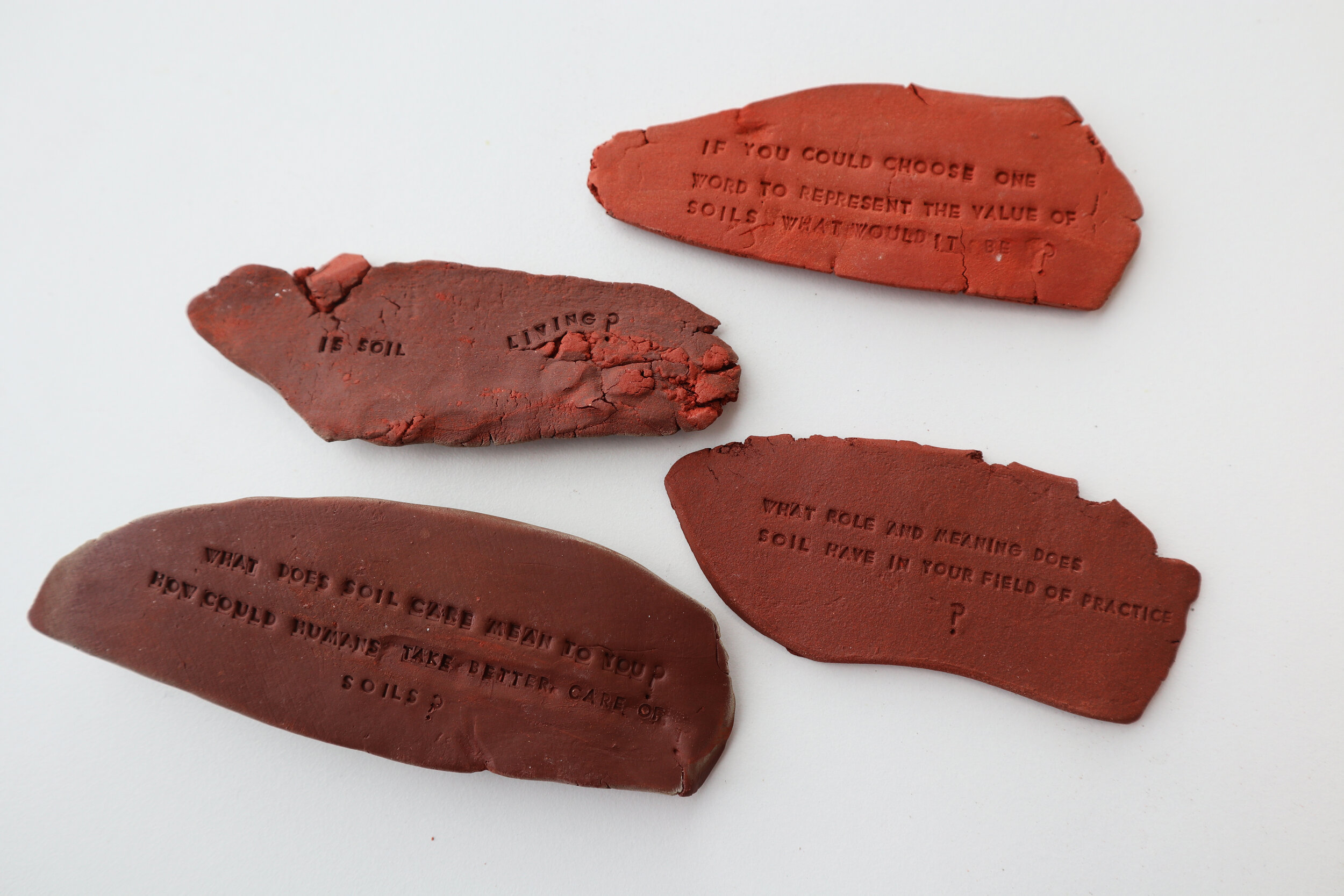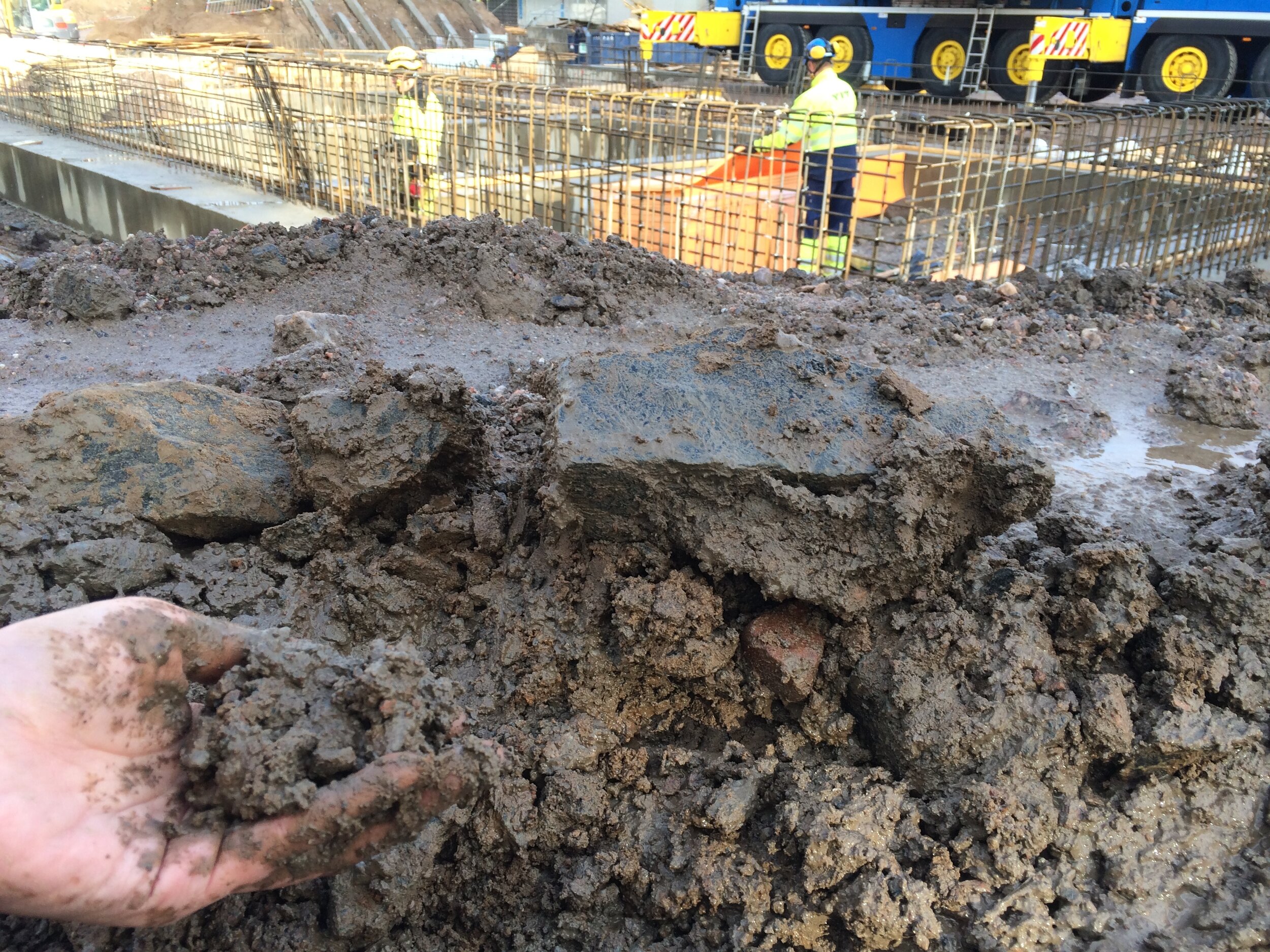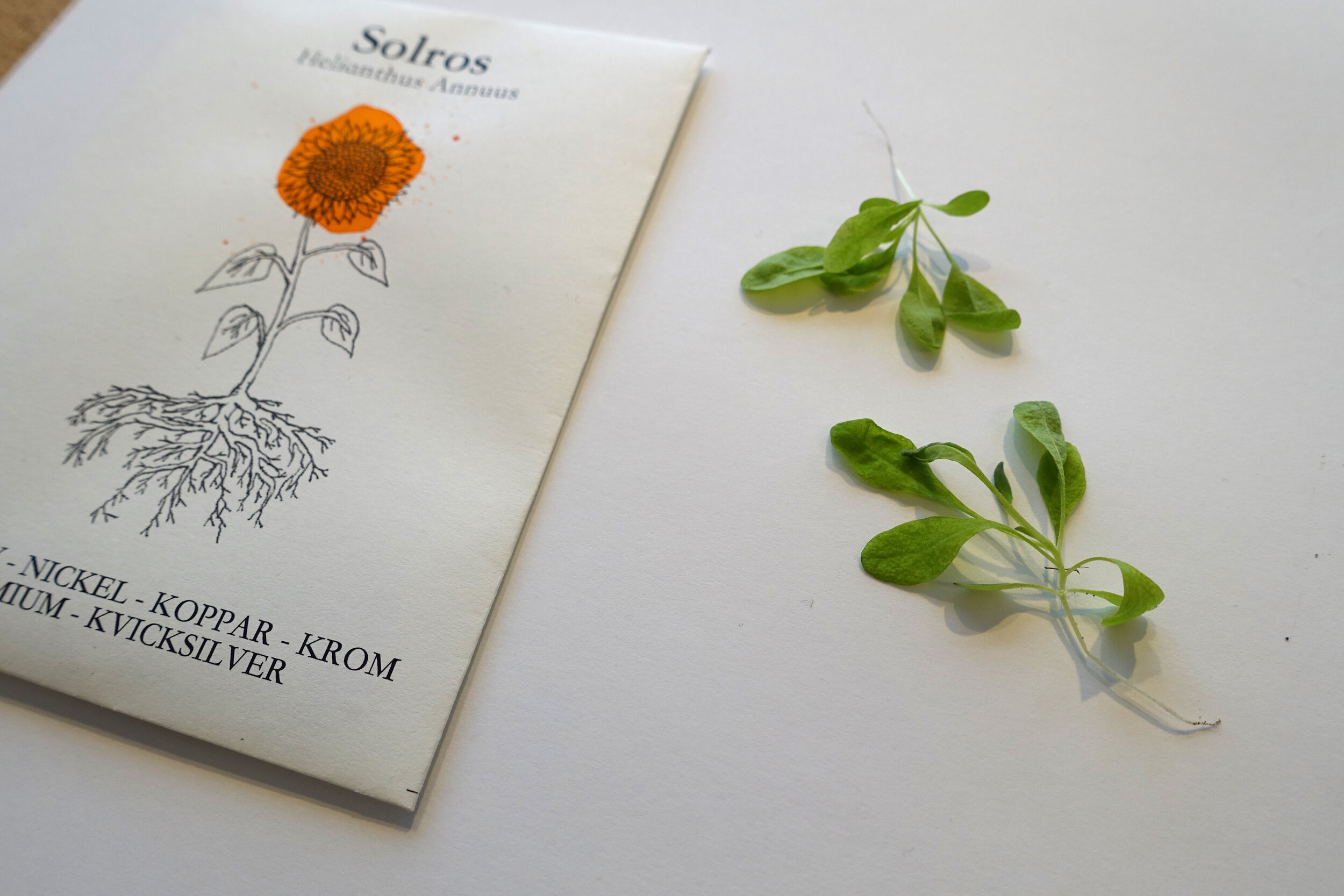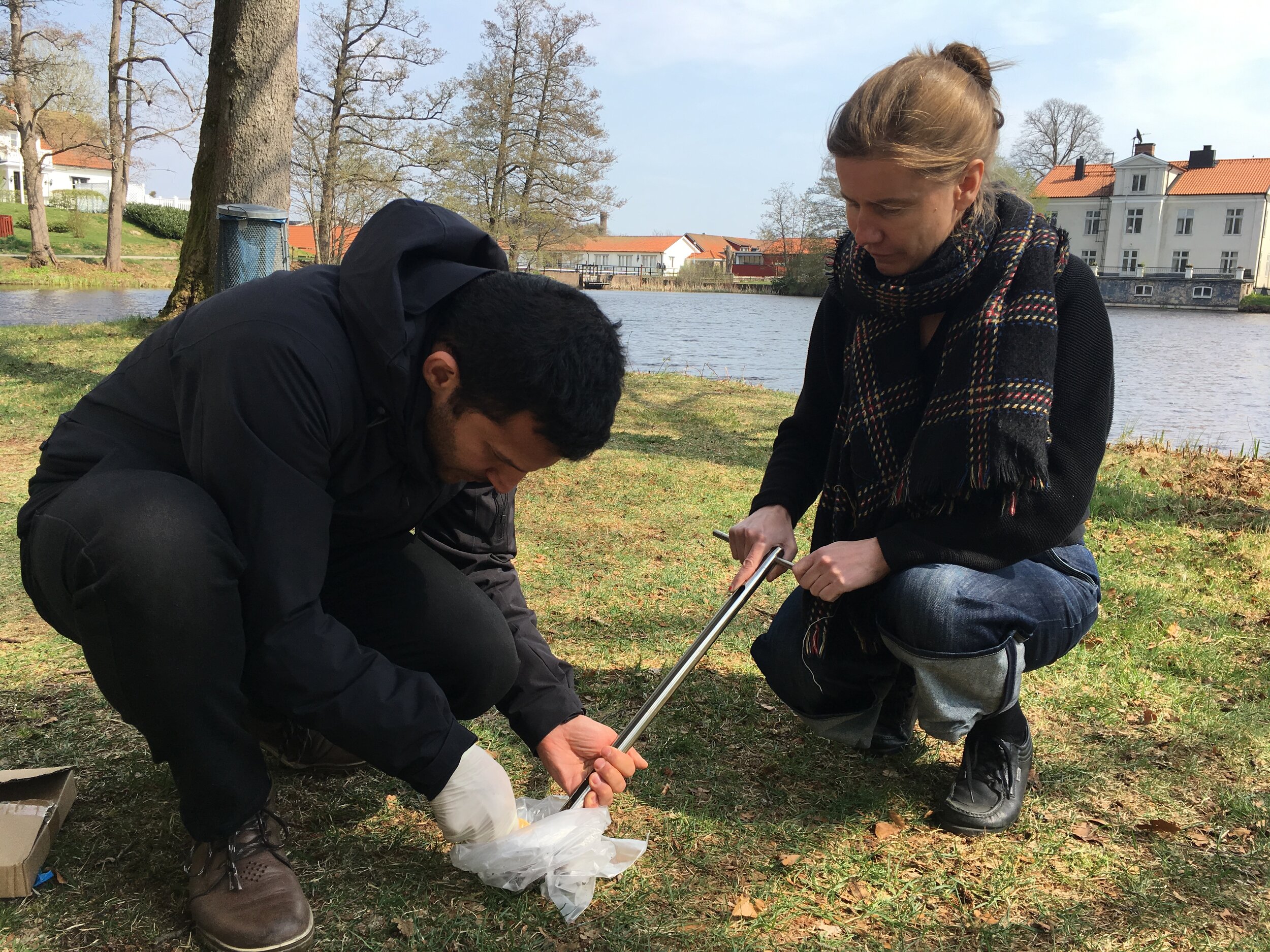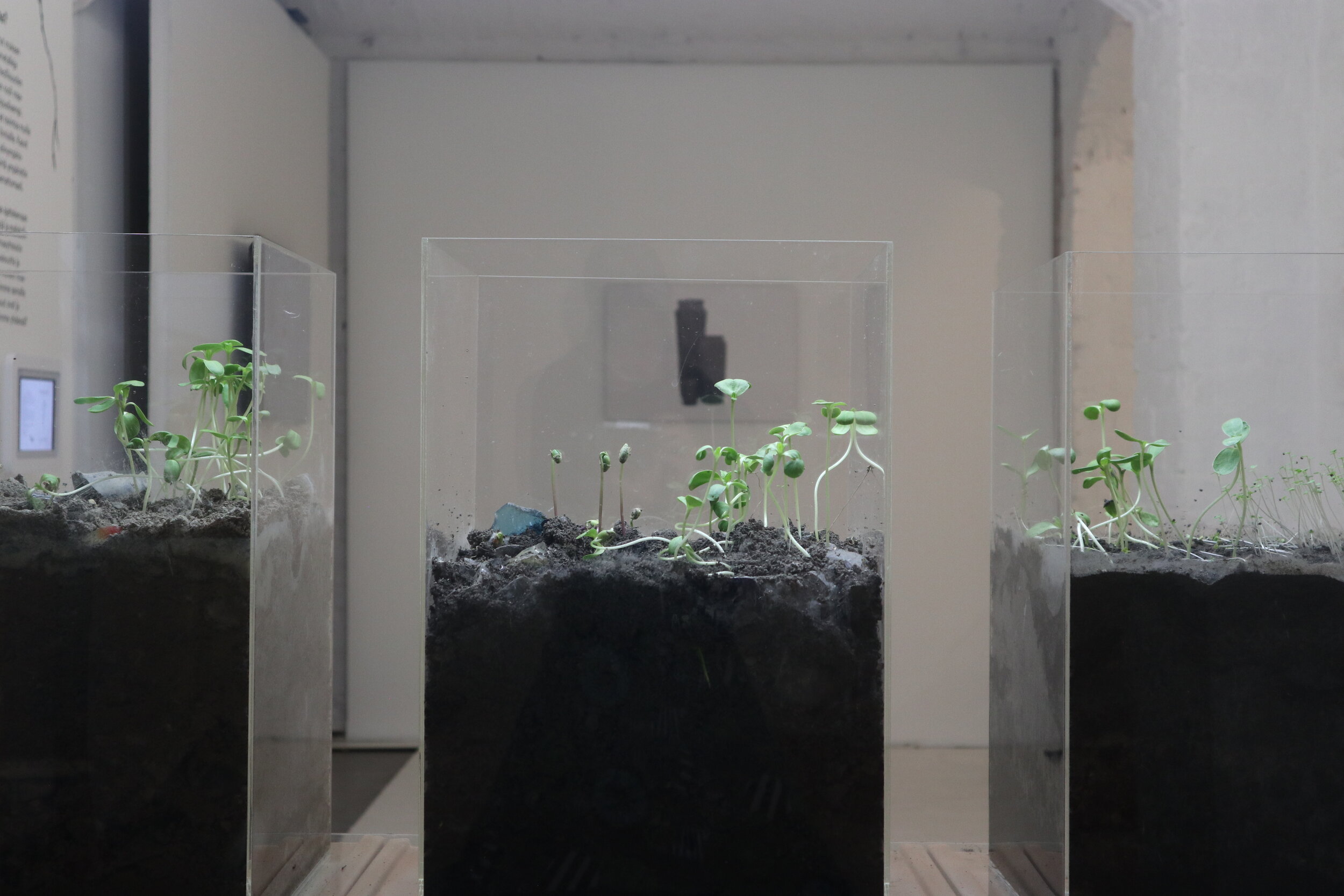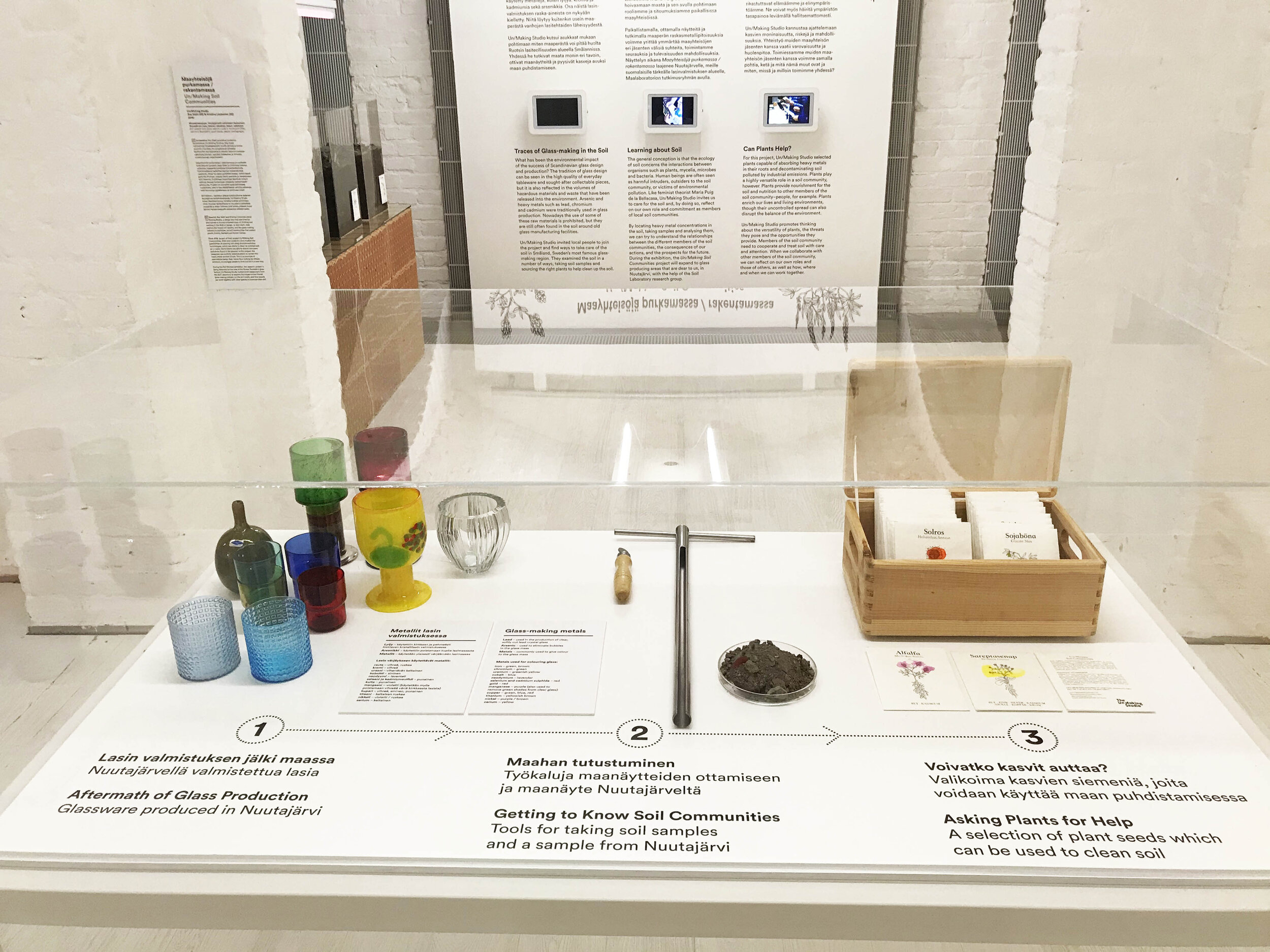Soil Matters exhibition at the Design Museum Helsinki explores the materiality of soil and how it is interwoven with human activity.
4 September–10 January 2021 The Design Museum Helsinki
Soil Matters exhibition at the Design Museum Helsinki’s Gallery presents craft and design projects which explore the relationship between humans and soil. The exhibition is curated by artist and researcher Riikka Latva-Somppi and Maarit Mäkelä, ceramic artist and Associate Professor. The exhibition was chosen from over 50 submissions in the Design Club Open Call by Design Museum Helsinki. The international call for exhibitions themed material and materiality drew entries from 15 countries, including Finland, Germany, Italy and the Netherlands.
In the exhibition, a multidisciplinary group of professionals from ceramic artists working with scientists to artist-activists present nine experimental design projects. The projects bring up issues of locality, soil contamination, legislation and protection of soil, the consequences of overconsumption and the dark side of green technology. Furthermore, the exhibition visitor is introduced to soil through thematic texts. The texts present ideas of soil development and how does soil change over time, as well as how is ceramic and glass materials connected to soil. Additionally, the idea of soil as a community and soil care is discussed, encouraging us to think about our own soil relationship to assume more responsibility and hope for our actions.
In one of the projects, the audience can observe, how seeds germinate in Nuutajärvi soil and in another they can smell Somero’s red clay as ceramic artist Catharina Kajander processes her ceramic works on site. In addition to Finnish themes, the exhibition approaches soil from a global perspective: viewers will be able to visit the shores of a polluted lake of sludge in Mongolia in the work of the London-based design studio Unknown Fields Division, and the Traces from the Anthropocene project takes museum guests to islands built from waste in the Venetian Lagoon area. (www.designmuseum.fi)
”By selecting exhibitions with critical approaches, such as this one, we are able to make room for discussions around the topic and help people see the world we share with new eyes.”Jukka Savolainen, Design Museum Director
As part of the Un/making Soil Communities project, the germination and growth of the phytoremediative plants planted in Nuutajärvi soil can be followed in the exhibition space. Photo: Paavo Lehtonen
Ceramic artist Catharina Kajander coiling a large pot with red earthenware clay from Somero. Photo: Tzuyu Chen
The value of land and soil has traditionally been considered in terms of economic value and productivity. Earth minerals and heavy metals are utilised in almost all consumer goods, from ceramics to digital products. The design industry therefore, also has a significant impact on soil. The exhibition highlights the consequences that design, consumption and other human activities have on soil. One of the projects, Traces from the Anthropocene: Working with Soil (https://empirica.aalto.fi/traces-from-the-anthropocene) was conducted by Empirica research group members in 2019. This project generated an idea to gather together projects that have evolved around the issues concerning soil. As a result, the winning proposal for the Design Club Open Call was made.
”Our current way of life is unsustainable, and each of us must reflect on how we can look after the wellbeing of our planet. As ceramic artists and researchers, it has been natural for us to address these challenges through soil and relevant themes. With the help of the exhibition, we want to rouse individuals and different actors in society to take a closer look at the relationship with the soil.” Maarit Mäkelä and Riikka Latva-Somppi
The curators of the Soil Matters exhibition Riikka Latva-Somppi (on right) and Maarit Mäkelä (on left) giving an opening talk. Photo: Tzuyu Chen
Soil Laboratory
Maarit Mäkelä (FI), Riikka Latva-Somppi (FI), Catharina Kajander (FI), Tzuyu Chen (TW) (visiting: Luis Vega)
In the centre of the exhibition is the Soil Laboratory (https://soil-laboratory.aalto.fi) an ongoing artistic research laboratory and collaborative studio space. At the Soil Laboratory, visitors are welcome to follow the creative process of art, craft, and design practitioners working with soil materials such as soil samples and clay. During the exhibition period, three interlocking projects are developed: 1) Critically Endangered Species, where selected species of plants and insects are painted with local soils to large Finnish Somero earthenware clay pots made by ceramic artist Catharina Kajander; 2) Un/Making Soil Communities, where a phytoremediation experiment of Nuutajärvi soils polluted by the glass industry takes place; and 3) Soil Stories, in which soil samples from around Finland sent by the public are analysed for heavy metals and taken into artistic use. Each project is an assembly of science, art and design, and personal stories. The artistic research projects evolve collaboratively and understanding grows within the creative process.
The Soil Laboratory concept is developed by Maarit Mäkelä and Riikka Latva-Somppi. The project is undertaken by the Empirica research group at Aalto University Department of Design.
Traces from the Anthropocene: Working with Soil (2019)
Maarit Mäkelä (FI), Riikka Latva-Somppi (FI), Catharina Kajander (FI), Özgü Gündeşlioğlu (TR), Tzuyu Chen (TW), Pauliina Purhonen (FI)
Traces from the Anthropocene: Working with Soil is a project that brought together a group of ceramic artists to explore and process the soil in the Venetian Lagoon area. First, soil and sediment samples were gathered and carefully analysed for heavy metals. Large vessels from local brick clay were made and then painted with the sludge made from the soil. The work explores the constant changes occurring in soil and poses questions about the effects of human activity on soil and its ecosystem. Soil Matters exhibition will feature the pots created as part of the research project, together with ceramic specimens, soil samples, and photographs.
This artistic research project was carried out at the Department of Design at the Aalto University in cooperation with soil contamination experts from the Finnish Environment Institute (SYKE). The original project was conducted during the Research Pavilion event in the context of the 2019 Venice Biennale.
Artificial Islands (2019–2020)
Riikka Latva-Somppi (FI)
The photograph series Artificial Islands by Riikka Latva-Somppi was inspired by the artist’s trip to the island of Sacca San Mattia in Murano, Italy. The Murano islands are renowned for their 700-year-old glass-making tradition. Sacca San Mattia, like many islands in the lagoon in Venice, was built of debris. The artificial island was created by dumping waste from the glass industry, household waste and building rubble into the sea, and the repeated dredging of the lagoon bed. The traditional Venetian way of building artificial islands is an extreme example of human impact on nature. Latva-Somppi’s photographs ask whether we can any longer distinguish between a natural landscape and an artificial structure generated by the needs of the consumer society.
Earth Dialogue (2015)
Maarit Mäkelä (FI)
The colours and materials of the ceramic Earth Dialogue paintings come from the soil of New Zealand. Ceramic artist Maarit Mäkelä collected rocks, clay and sand from the island of Waiheke which she later moulded into the materials for her works: Both the clay slabs that function as the base of the works and the clay sludge used as paint were made with these earth-derived materials. The piece featured in the exhibition was created by drawing and painting on wet slabs of clay which were engraved with a stick; several fine layers of different types of sludge were extended over the slabs. In addition to the completed clay painting, the exhibition features material specimens from New Zealand.
Rare Earthenware: Radioactive Ceramics (2014)
Unknown Fields Division (Liam Young and Kate Davies) (UK)
The nomadic design studio Unknown Fields Division analyses, traces and reveals problems and malpractice in the production of consumer goods. Design studio’s projects take their audience on expeditions to remote places where, for example, raw materials are produced and excavated for the needs of the electronic industry. The group has previously researched the Texaco company’s oil fields on the Ecuadorian Amazon, sapphire production in Madagascar, and gold mining in West Australia. The Soil Matters exhibition will feature a film from the Rare Earthenware project, in which the group traced the origins of the rare metals used in technology products such as smart devices and laptops. The expedition took the designers to a lake of radioactive sludge in Mongolia. The lake is badly polluted because the Bayan Obo rare earth mine —the world’s largest resource for mining the rare earth elements used in smart devices— empties its wastewater into it.
Unknown Fields Division is a nomadic design studio based at the Architectural Association School of Architecture (AA) in London.
Wasteland (2019–)
Annelie Grimwade-Olofsson (SE/DK)
With the growth in consumption, waste incineration plants produce increasing volumes of solid combustion residue that includes environmental toxins, among other things. Designer and artist Annelie Grimwade Olofsson uses combustion residue as the material for a series of ceramic works in the Wasteland project, a project which focuses on the by-products of industrial production and, in so doing, demonstrates the threats and opportunities associated with these materials. In Wasteland, Grimwade Olofsson finds a balance between works of art and innovation of materials, and seeks to highlight how it is possible to “excavate” raw materials from combustion residue instead of using metals extracted from soil or recycled.
Horizons (Dirt is matter out of place) (2020)
Erna Skúladóttir (IS)
Icelander Erna Skúladóttir addresses the status of soil in her work. The material she uses in the piece exhibited in Soil Matters is clay from the hot springs of Krýsuvík, a fragile ecosystem which enjoys legal protection. Skuladottir was able to collect the protected clay because, once the soil has drained from the hot springs into a ditch, it has turned into “dirt” and is no longer protected by law. Horizons, the work shown in the exhibition, features water and soil collected from the ditch and presented in transparent perspex tubes. Over time, the particles of the mixture of materials gradually separate to form a landscape that resembles the geological deposits of the earth.
Soil Care: Symphony Rehearsal (2019–2020)
Tzuyu Chen (TW)
This is a design research project by Taiwanese designer Tzuyu Chen, who recently graduated from Aalto University’s Contemporary Design MA-program. Through this project, she seeks to establish conversation about the interaction that exists between soil and the people who care for it. Chen first collected soil from various environments in Finland and processed them into ceramic materials. She then asked people who work with soil in various roles to attend a one-on-one workshop in which the participants processed both the material and their own relationship with soil. In the exhibition, you can hear an archaeologist, a biodynamic farmer and a construction engineer discuss their relationship with soil. In addition to the interviews, the exhibition features soil specimens collected during the process and objects created in the workshops
Un/making Soil Communities
Un/Making Studio: Åsa Ståhl and Kristina Lindström (SE)
In their work, the Swedish Un/Making Studio explores the impact of industry on soil communities that sustain plants, worms, bacteria and human beings. Since 2018, as part of their project Un/Making Soil Communities, Ståhl and Lindström have studied the possibilities of cleaning soil using phytoremediation technologies, which use plants to clean up polluted soil, air or water. Some plants are able to absorb and store pollutants found in the ground. In this project, the designers use carefully selected plants to correct the heavy metal content of soil. During the Soil Matters exhibition, the research project is being extended to the area of the former glass factory in Nuutajärvi.
Artists and groups at the exhibition: Tzuyu Chen (TW), Annelie Grimwade Olofsson (SE/DK), Özgü Gündeşlioğlu (TR), Catharina Kajander (FI), Riikka Latva-Somppi (FI), Maarit Mäkelä(FI), Pauliina Purhonen (FI), Erna Skúladóttir (IS), Unknown Fields Division (Liam Young & Kate Davies) (UK), Un/Making Studio (Åsa Ståhl & Kristina Lindström) (SE)
The exhibition produced by the Design Museum Helsinki, in collaboration with:
Aalto University, AJ Tuotteet, Association for Rural Culture and Education, The Design Club – Design Museum’s business network, Embassy of the Republic of Iceland Helsinki, Finnish Environment Institute, Geological Survey of Finland, Kultelan Tiiliputki, Saastamoinen Foundation, Wienerberger.
https://www.designmuseum.fi/en/soil-matters/
https://soil-laboratory.aalto.fi
Soil Matters in media (https://soil-laboratory.aalto.fi/media/)
